Alpine Mineral Museum in Seedorf, Switzerland
Detailed photo report from the 2019 visit of the famous Uri Mineral Museum in Seedorf, Switzerland. The mineral exhibition includes wide variety of the high quality Alpine minerals.
The Uri Mineral Museum is located in the small village Seedorf, about 50 km south from Zürich and 2 km west from small town Altdorf. The museum is located in the former economic stone building of a nearby A Pro castle (also spelled Apro or A-Pro). The building was restored in 1978-1981 and placed under protection as a landmark and cultural heritage. Currently, the museum is under the patronage of the Urner Mineralienfreunde (UMF), which has been managing the exhibitions since the first opening on 30th May in 1981.
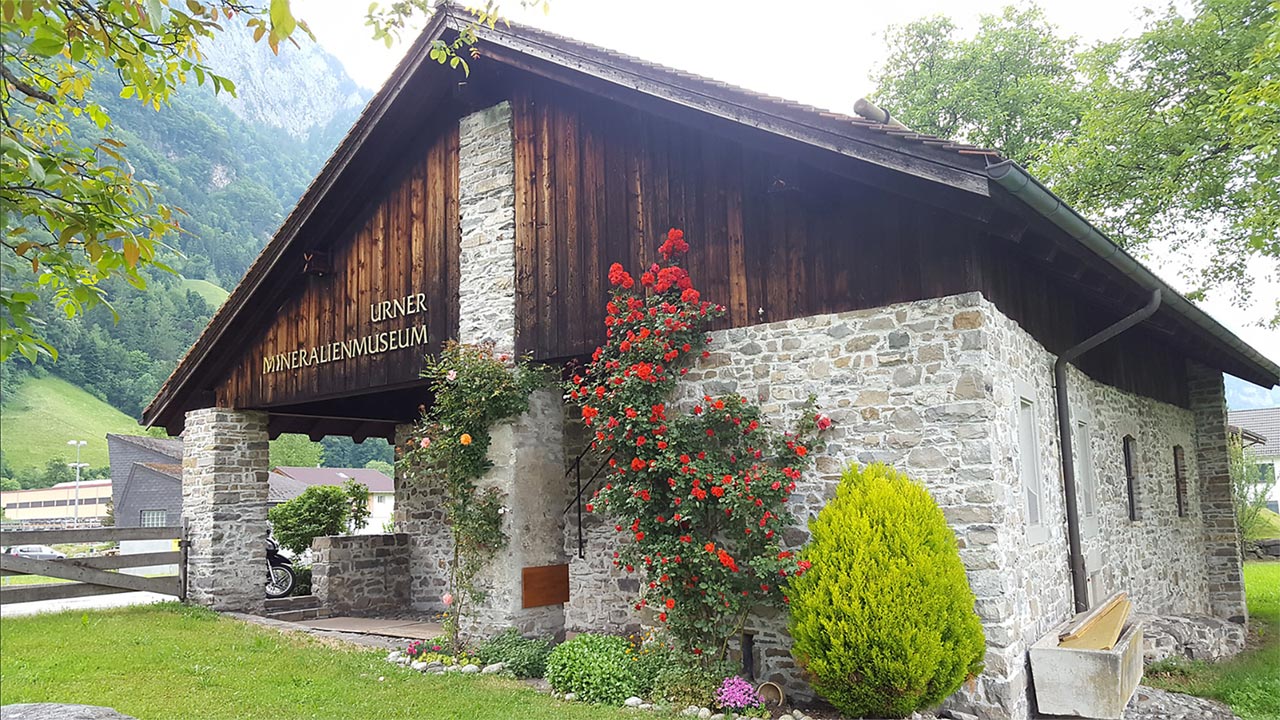
The museum is open only from May to October. However, the exhibition is changing every year, so its well worth the repeated visits. The museum is in the historic stone and timber building from 16th century. There are several rooms with the total od 16 displays and lot of decorative items, info panels and large historic and current photos around them. There is also a special DVD-room where you can watch documents about collecting in the Alps.
One of the special features of this museum is the chance to see top specimens of the local collectors. These mineral hunters, known under the German term Strahler (or Cristallier in French), include both hobby collectors and hardcore professionals. Some of the local families collect crystals for living for several generations. The high-altitude Alpine season is very short and collecting many of the displayed specimens requires huge experience, skill, lot of patience and of course luck.
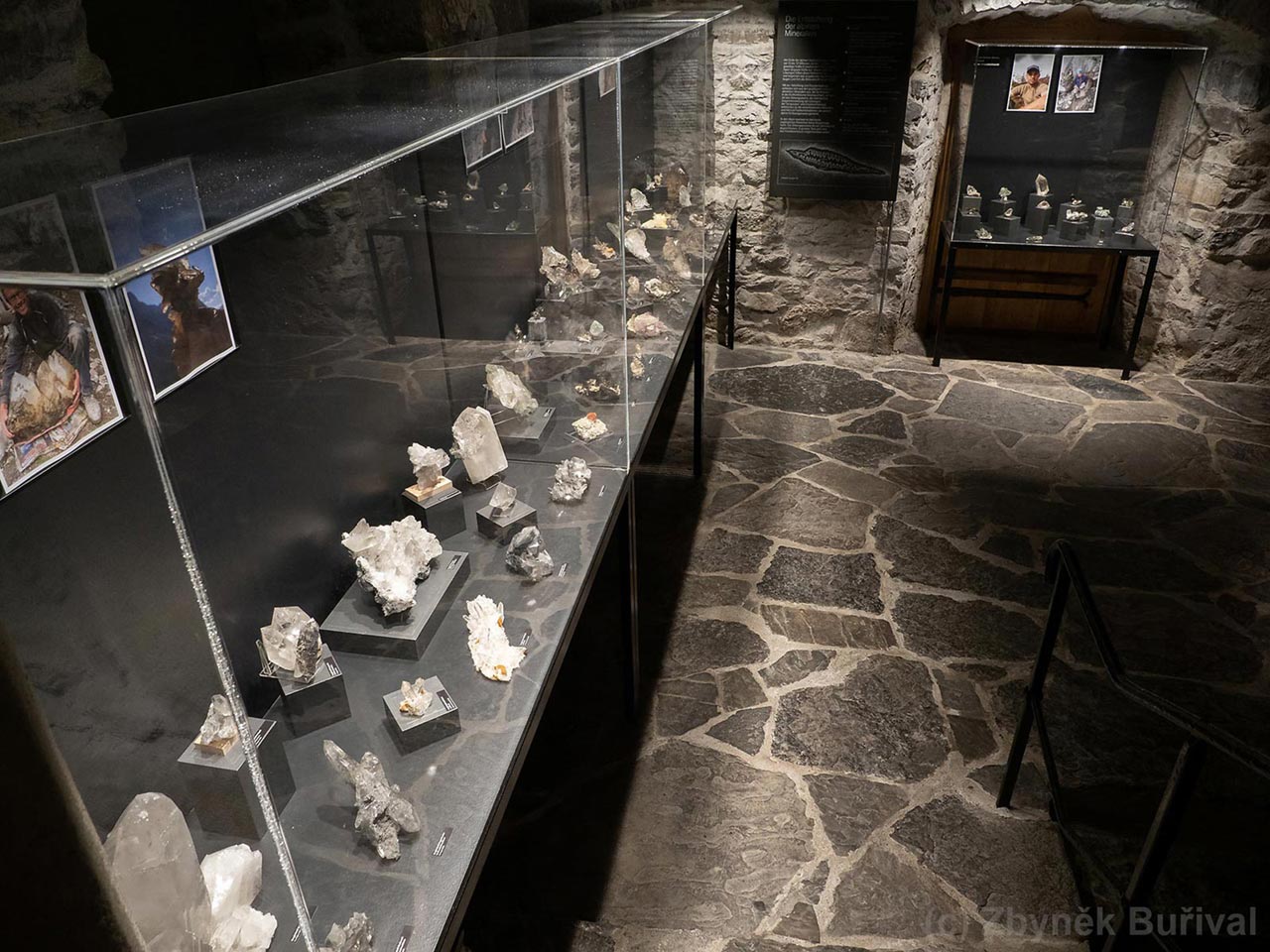

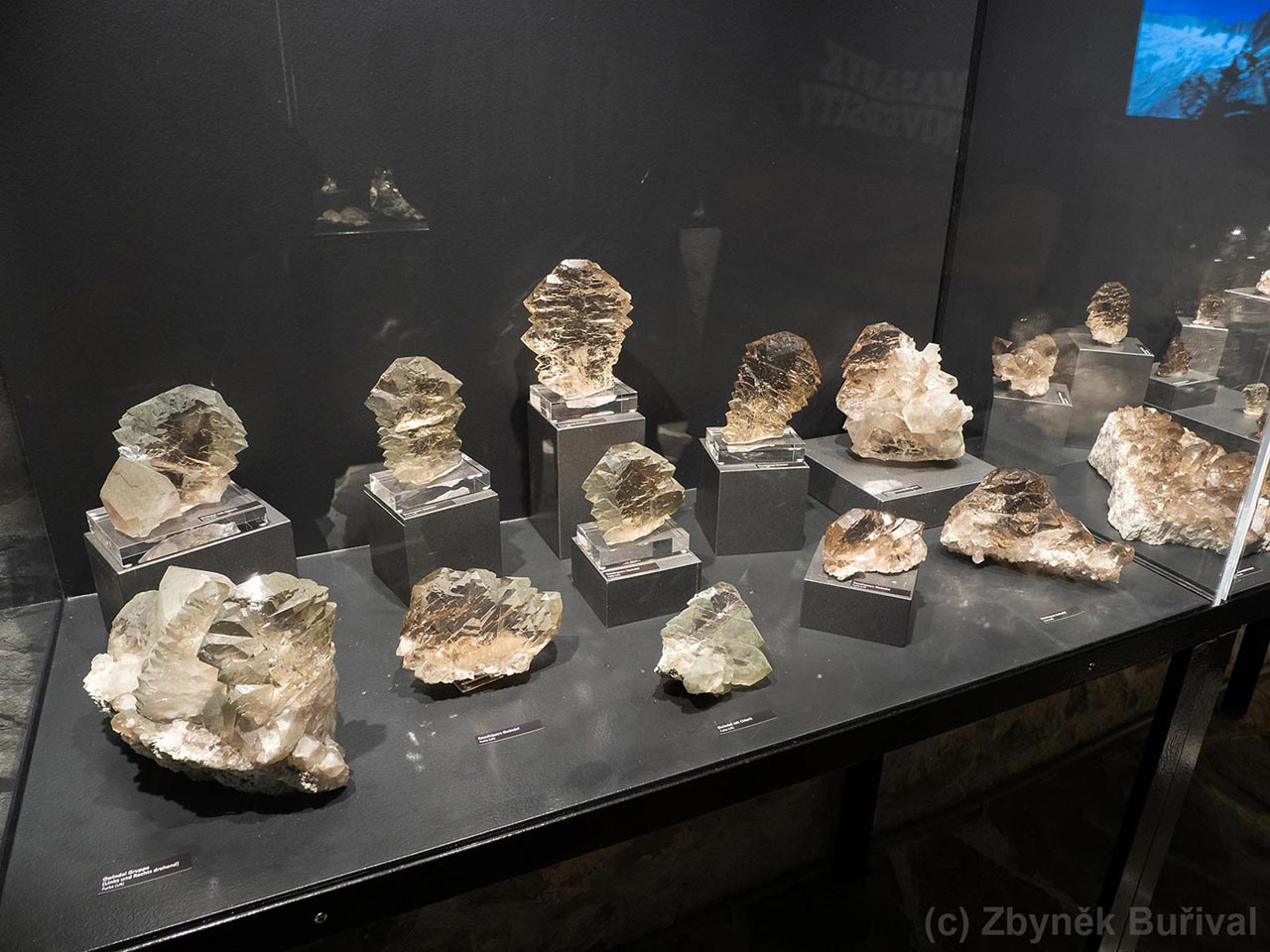
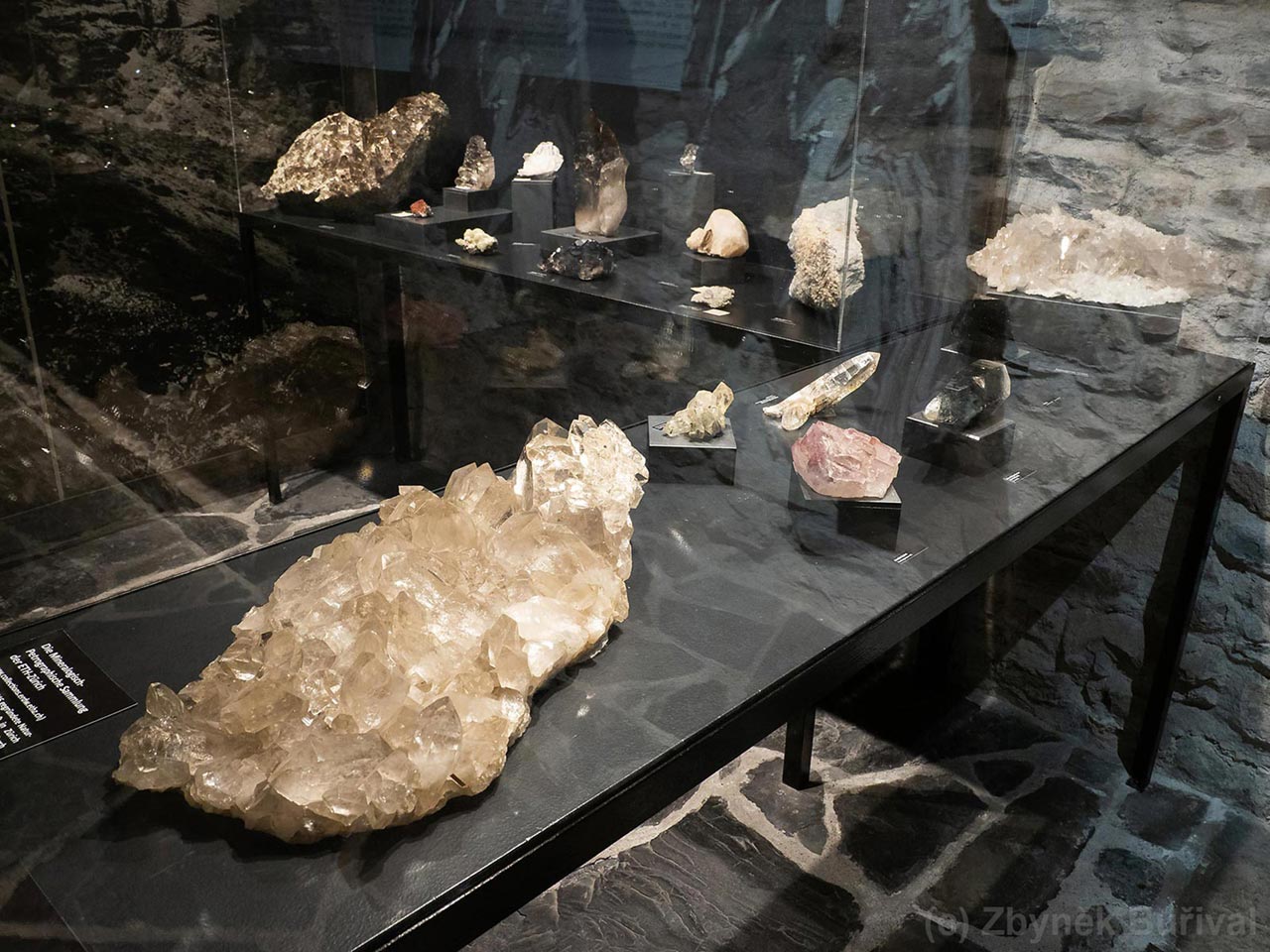
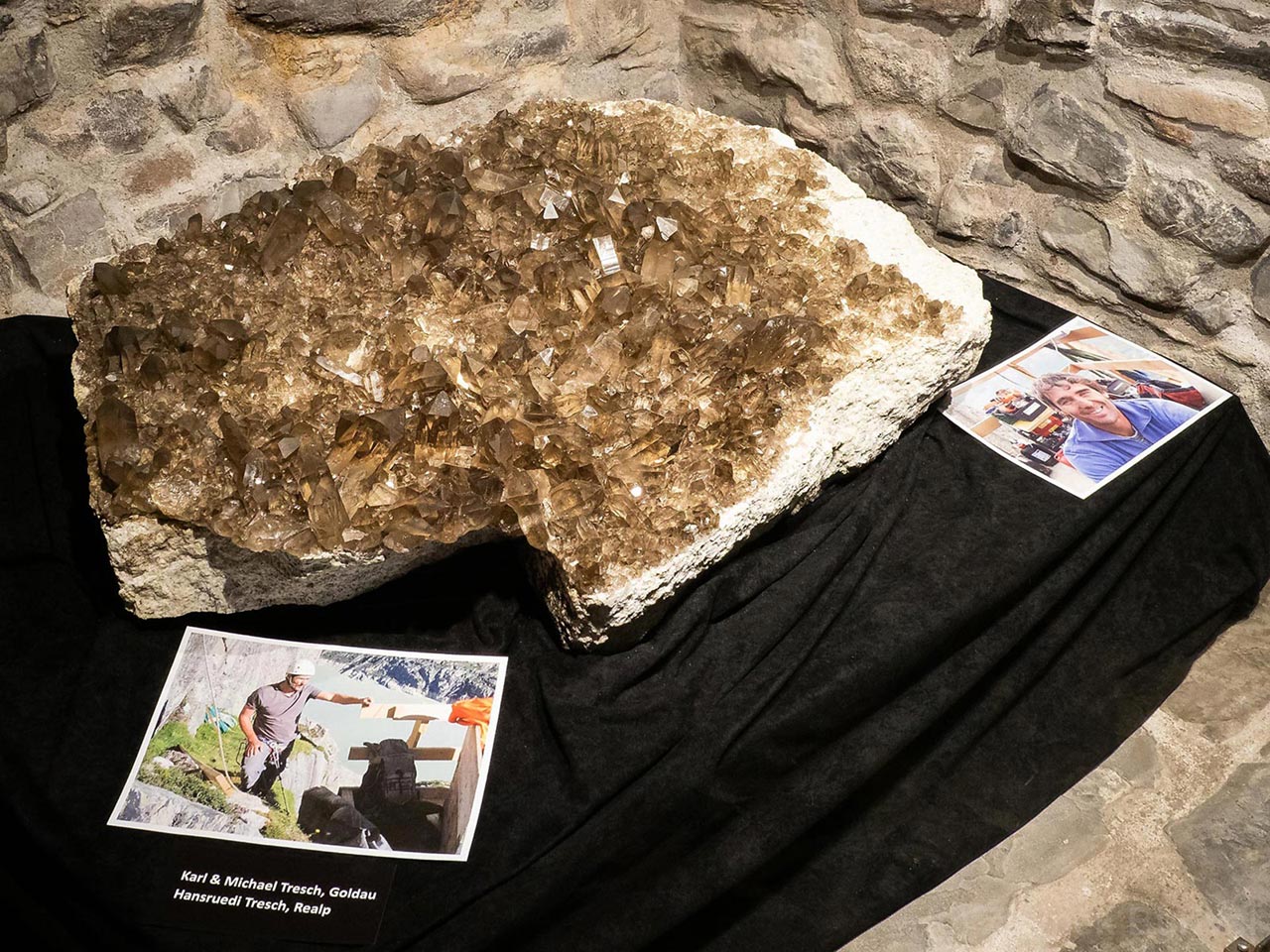
Mineral Museum Seedorf – opening times and price
The current entry fee is 7 CHF (or €7) with discounts for students, seniors and groups. You can also buy some mineral magazines and books in the museum, unfortunately for foreign visitors, all are in German. If you speak German, you can enjoy also the guided tour. The current rates and opening times are available here.
Unfortnately, due to covid-19 circumstances, the planned 2020 exhibition of “Minerals from Surselva” was cancelled completely and the museum is shut-down for the season. Details of the current exhibition are available here.
The gwindel quartz exhibition of 2019
The current report – including photos – is from the season 2019. The topic of the exhibition was “gwindel”, which is a special growth form of quartz. Almost parallel quartz crystals grow on each other with slightly twisted orientation, forming typical bent or twisted crystal shapes. Gwindels (from German “gewunden” = twisted) are typical for the Alps, but they may occur in some other areas with Alpine type fissures – like in Prepolar Ural’s localities Dodo and Puiva (Russia). If you are interested in details, check the detailed explanation and description of gwindels.
Gwindels have two common forms. The prevailing form is so called open gwindel (in French “peigne”), the much more exceptional form is the closed gwindel (in French “sucre”). Also the half-open (or semi-closed) form exists, these gwindels have one side shaped as the closed gwindel and the other one as the open gwindel. As there are left- and right-handed quartz crystals, also gwindels can be twisted clock-wise or counter clock-wise.
The 2019 season included lots of quartz specimens with minor prehnite, amiant (amphibole asbest), calcite, epidote, brookite, anatase and only few fluorites. However, several displays were dedicated to gwindels only, including some very nicely shaped closed gwindels (even on matrix), huge open gwindels and very interesting and rare morion (black quartz) gwindels. Vast majority of the specimens was from the Kanton Uri with significantly less from Kantons Wallis (Valais), Tizino (Ticino) and Graubünden.
You can find the older report with photos from 2002 season at kristalle.ch.
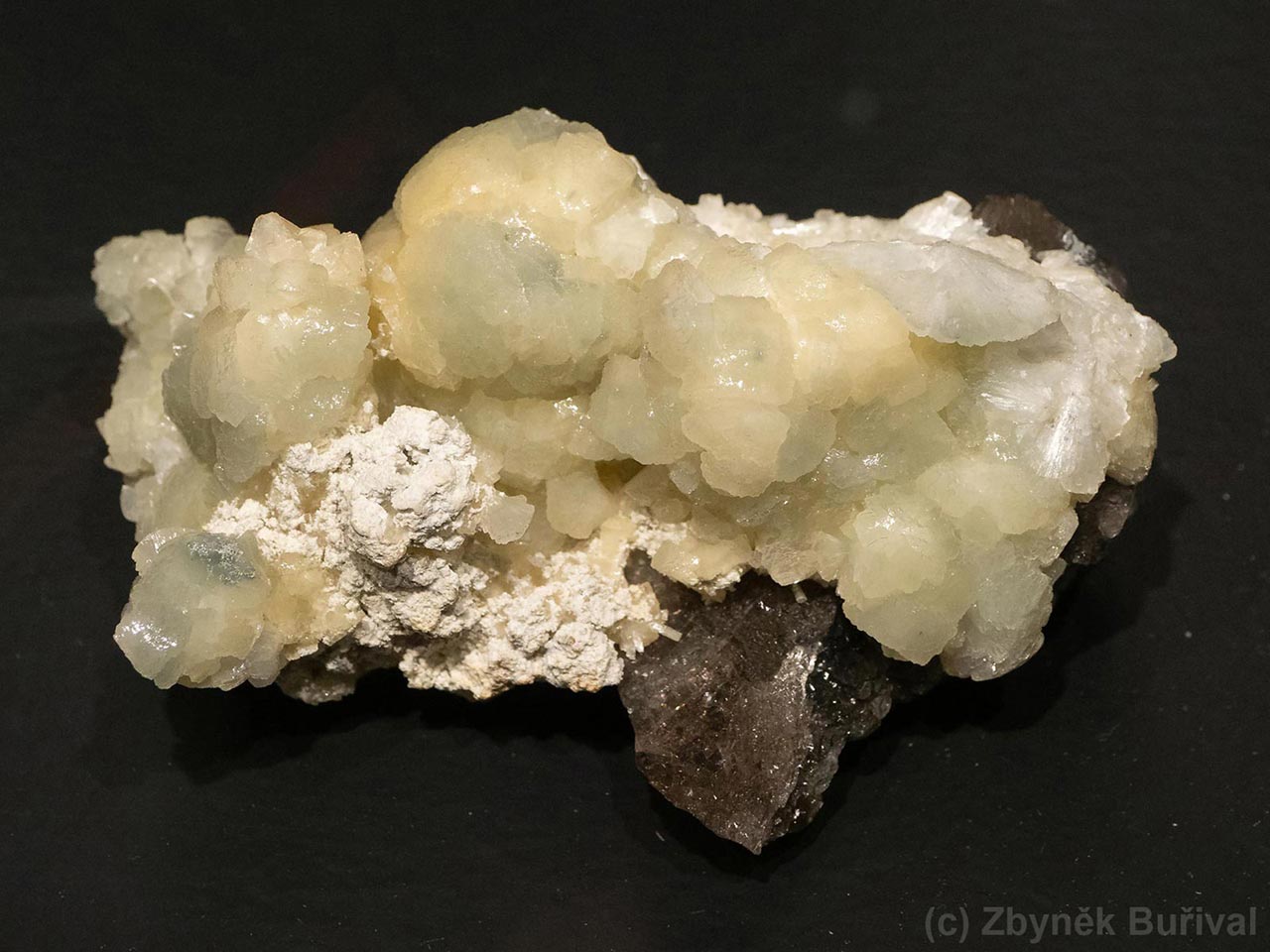
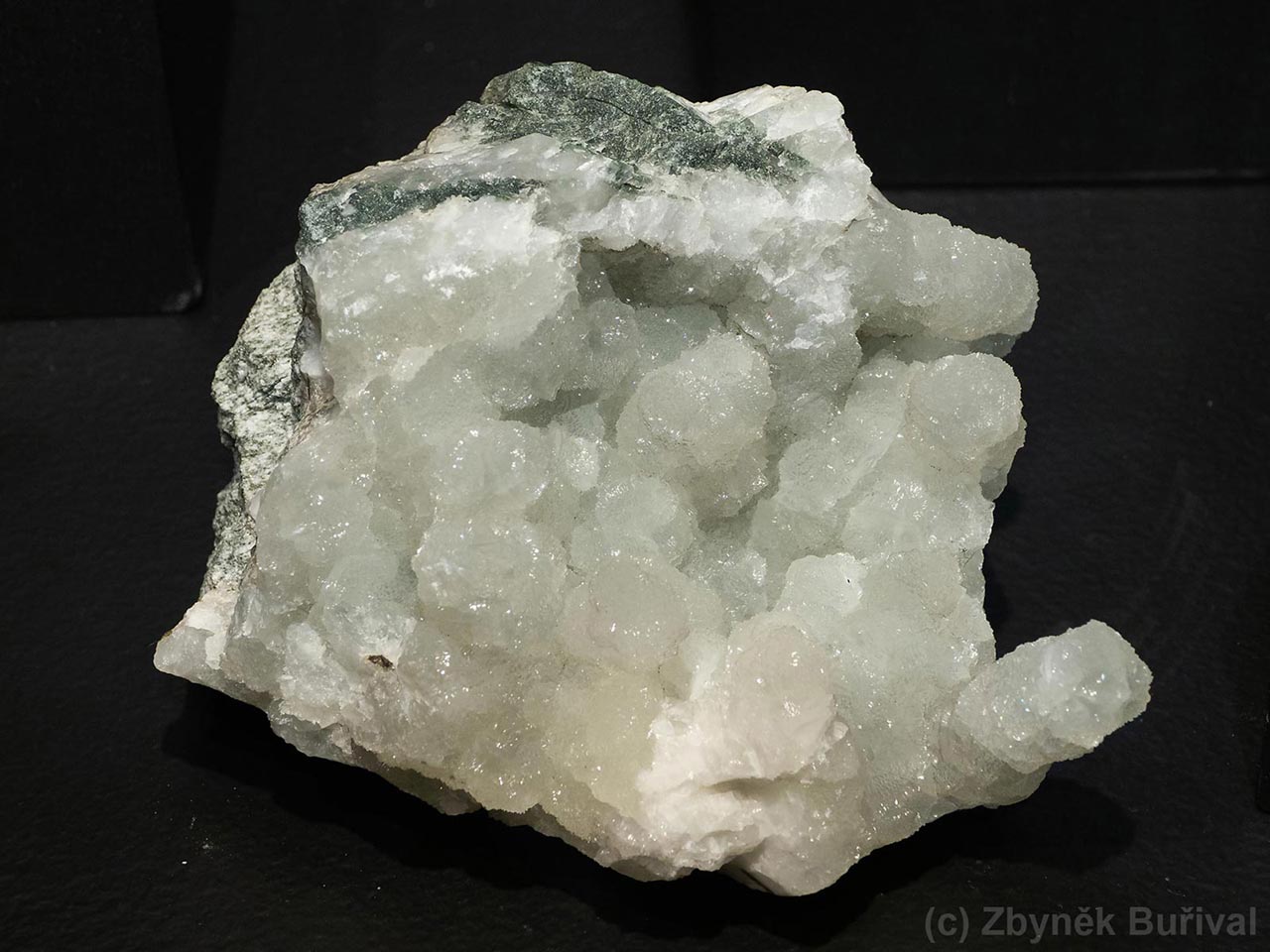

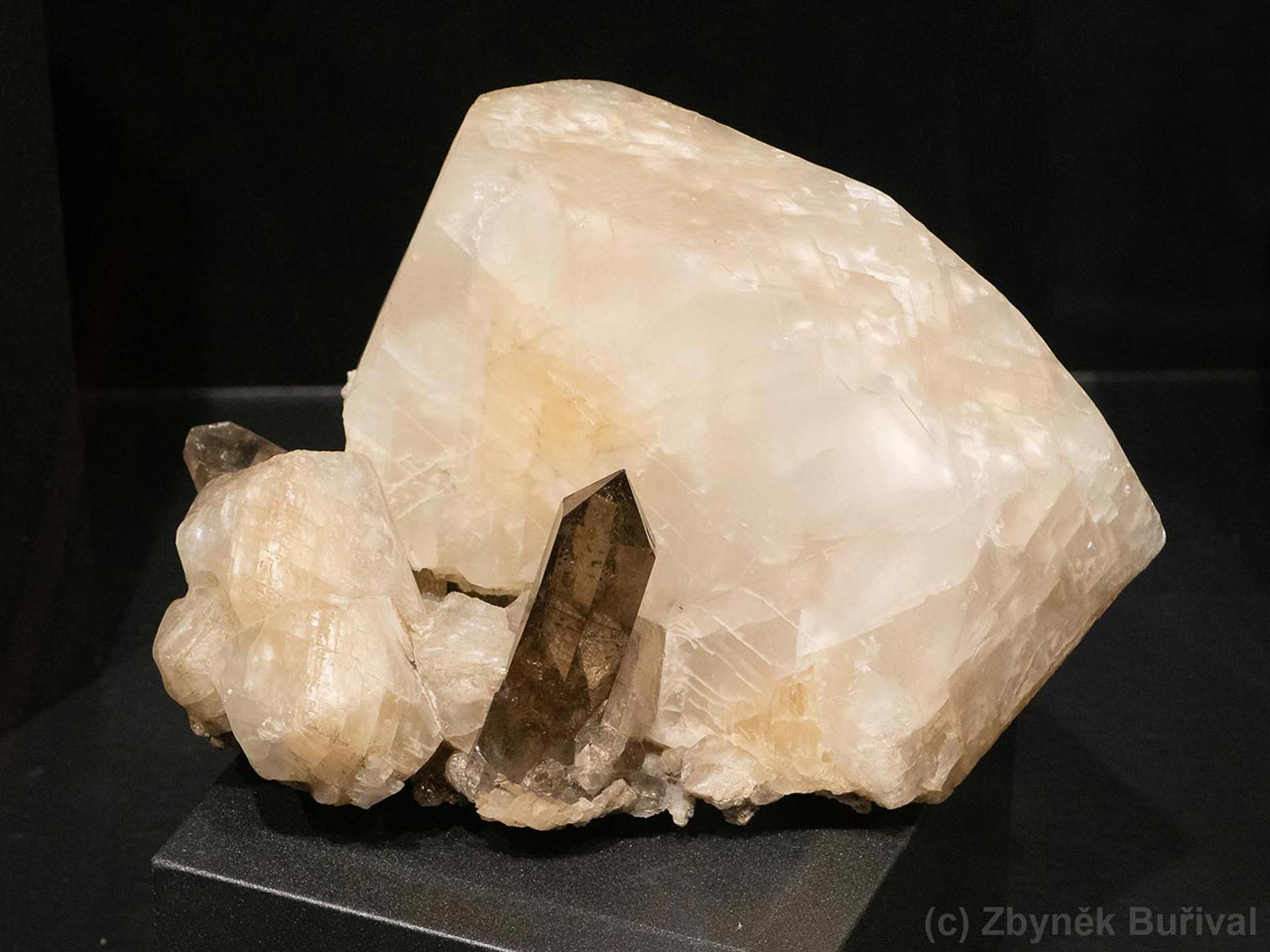
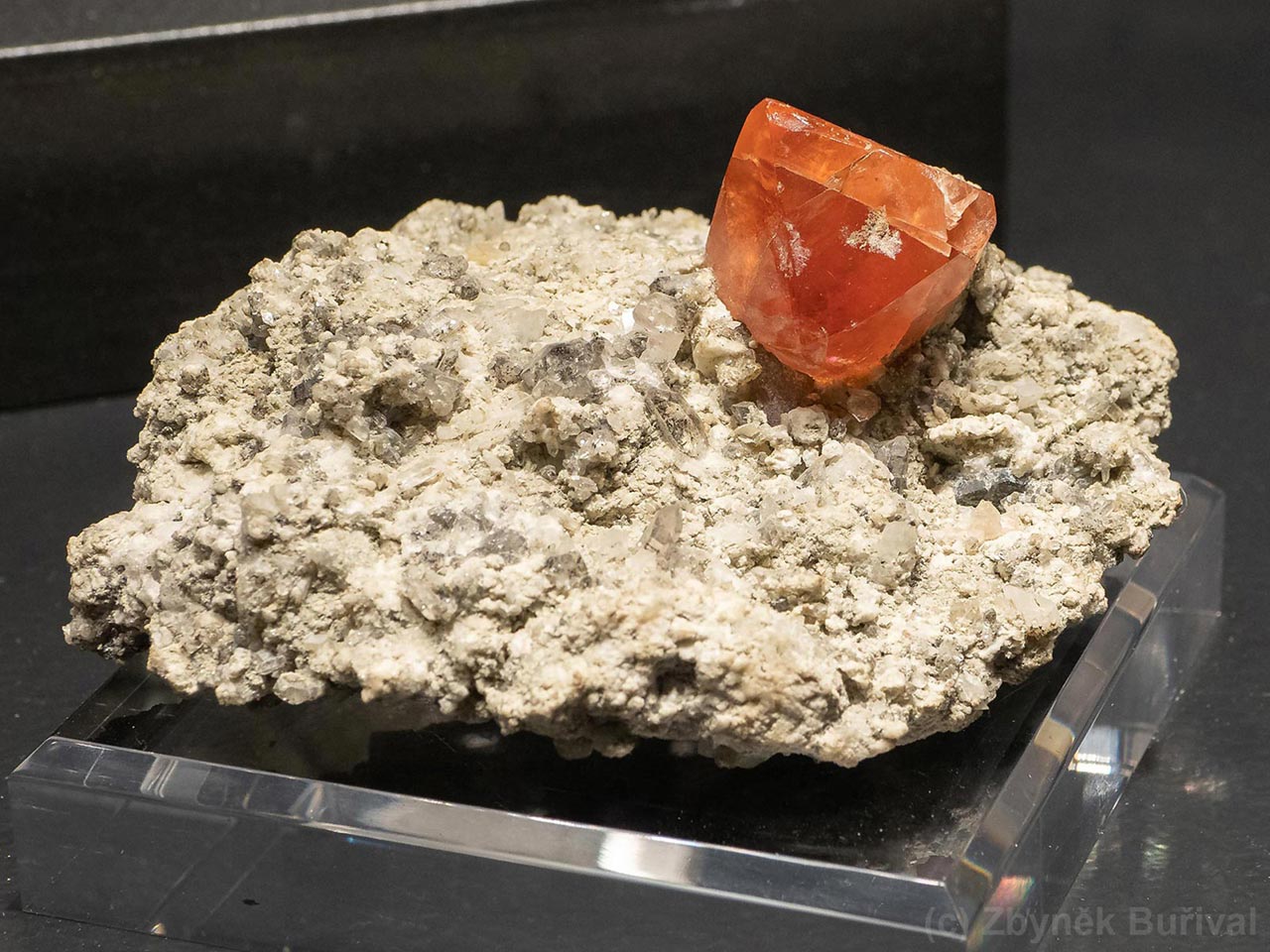
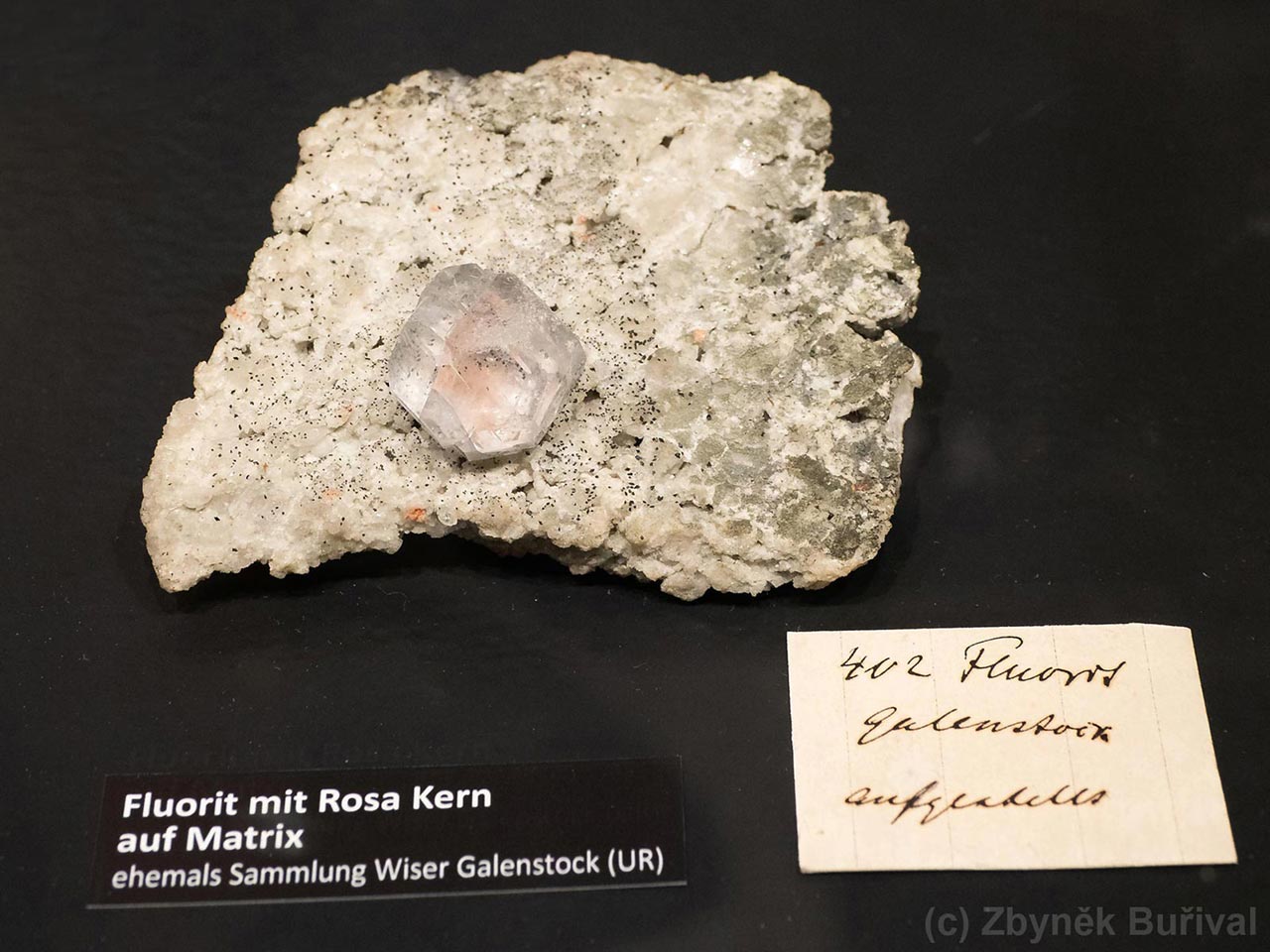
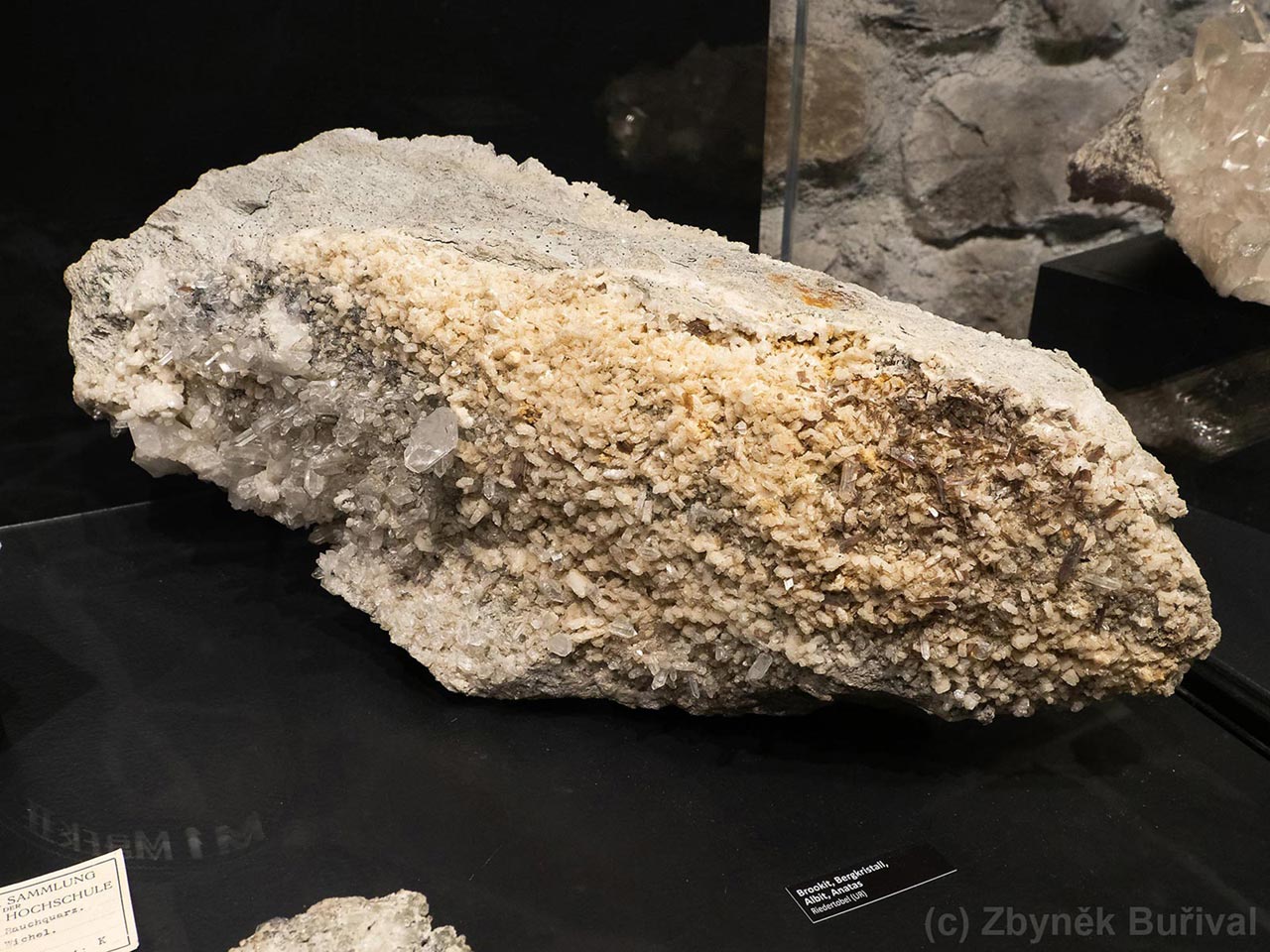
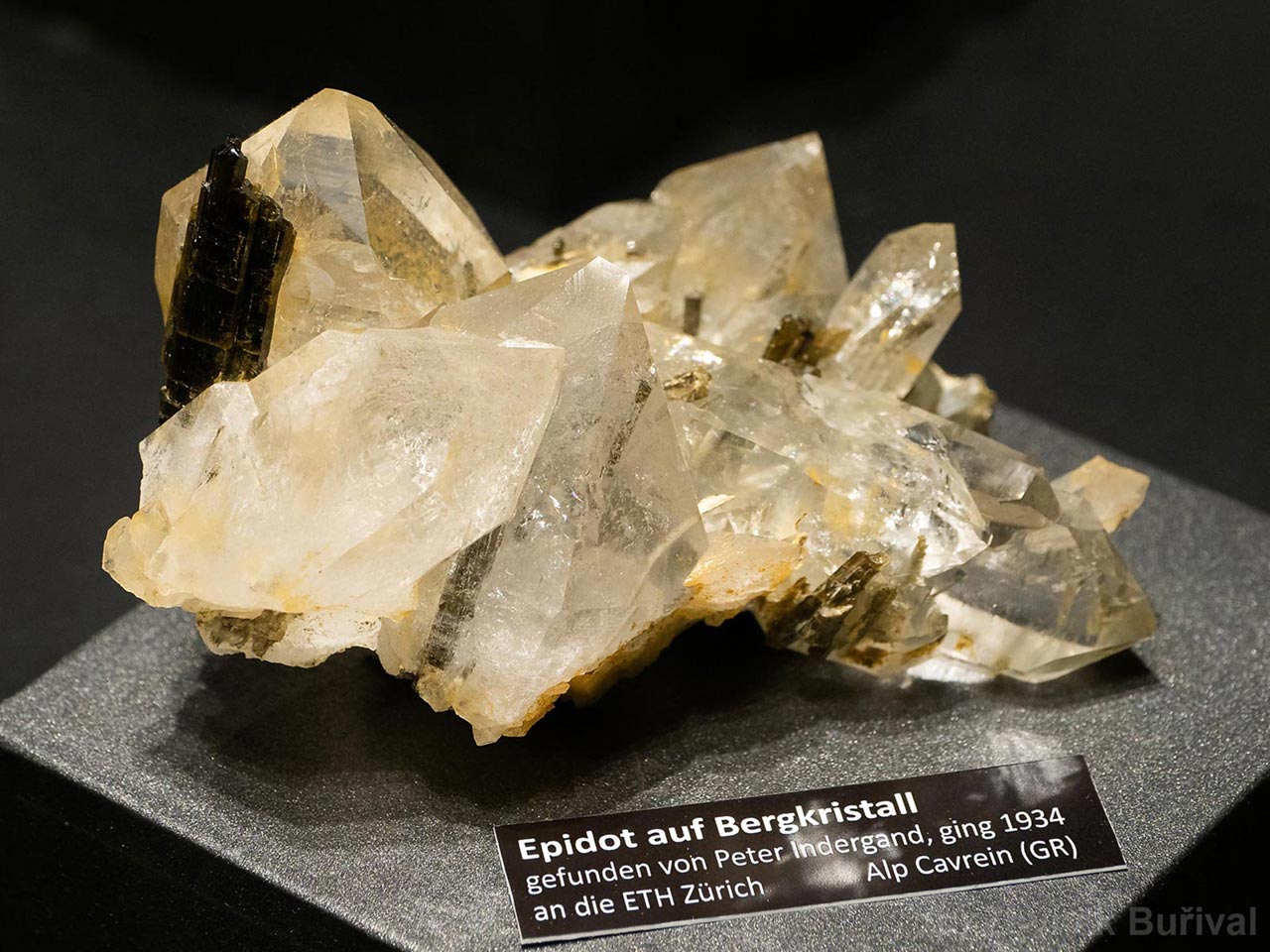
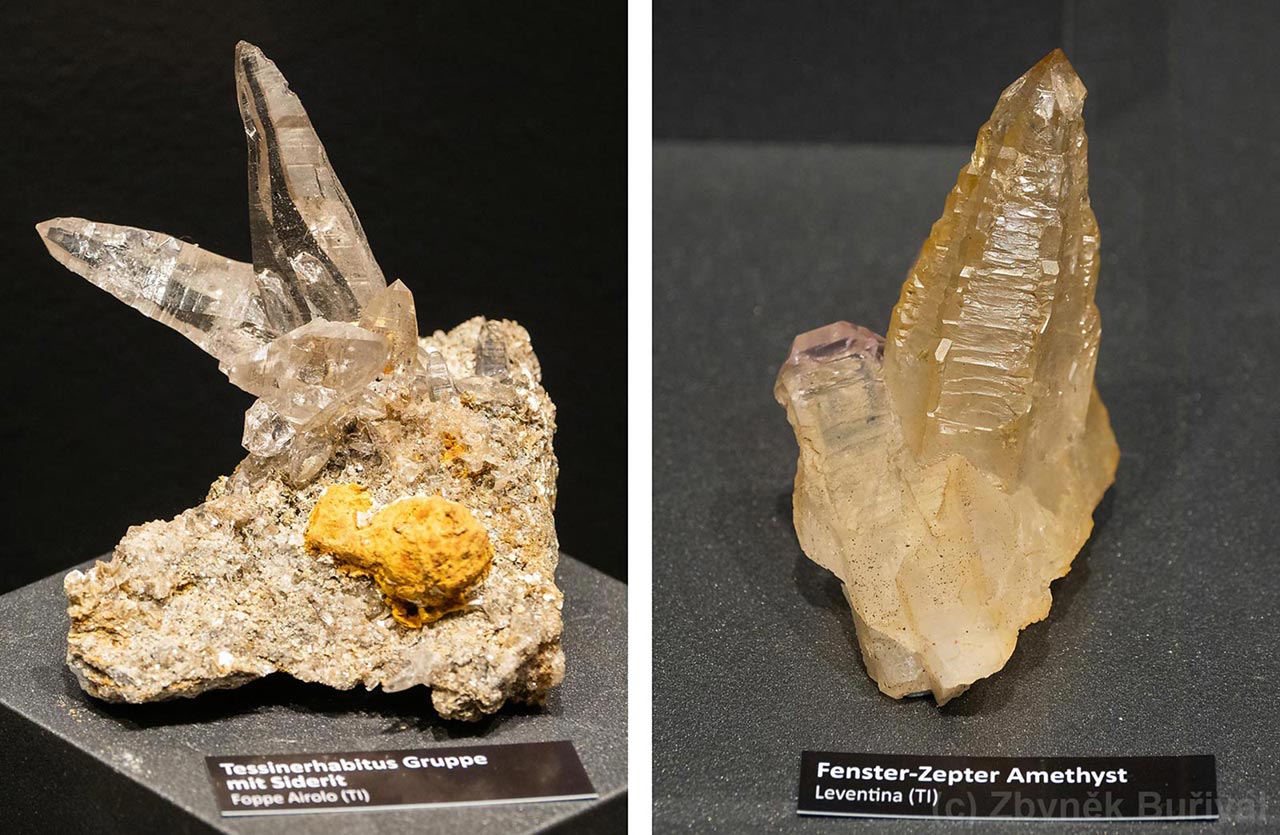
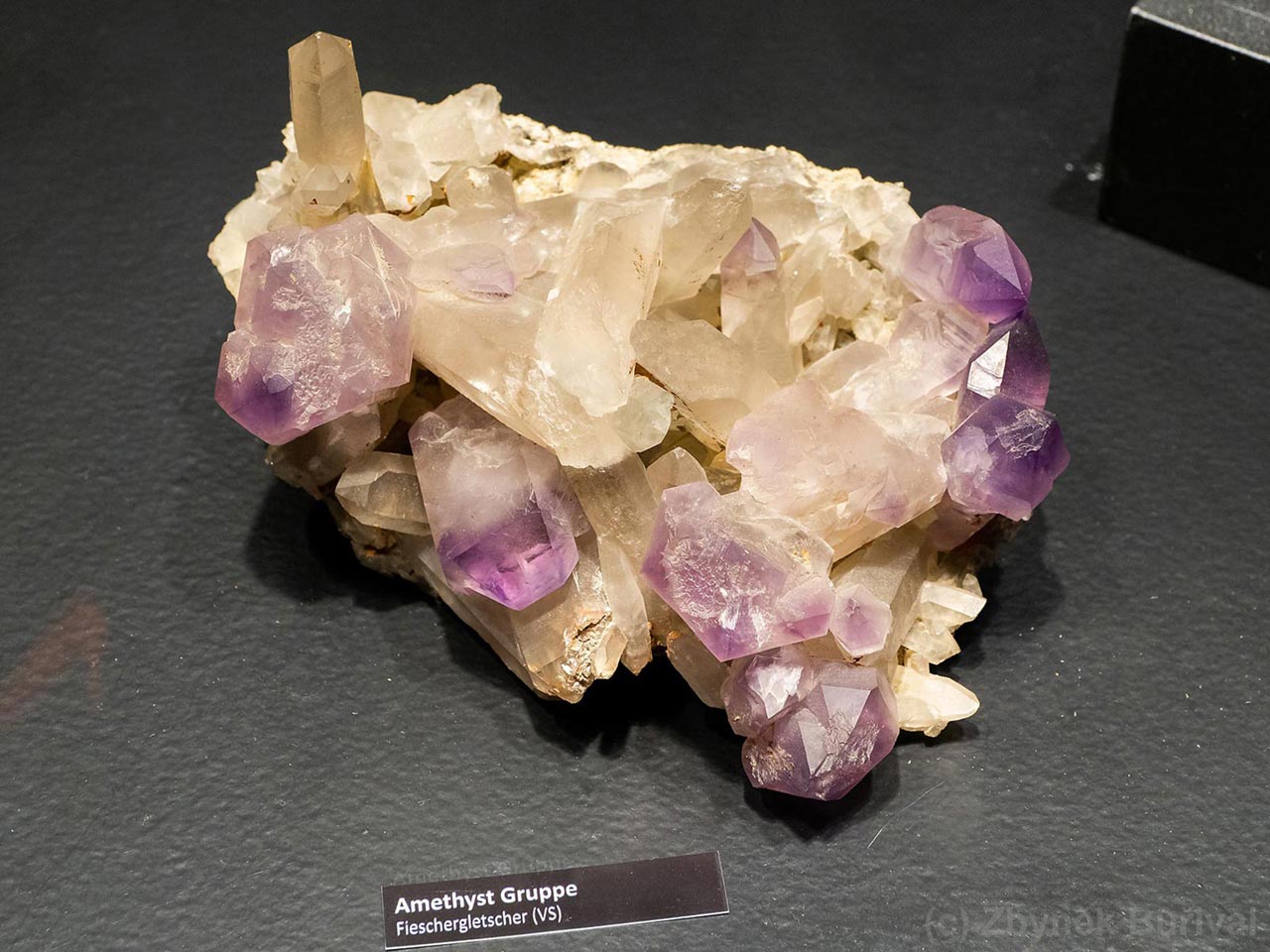
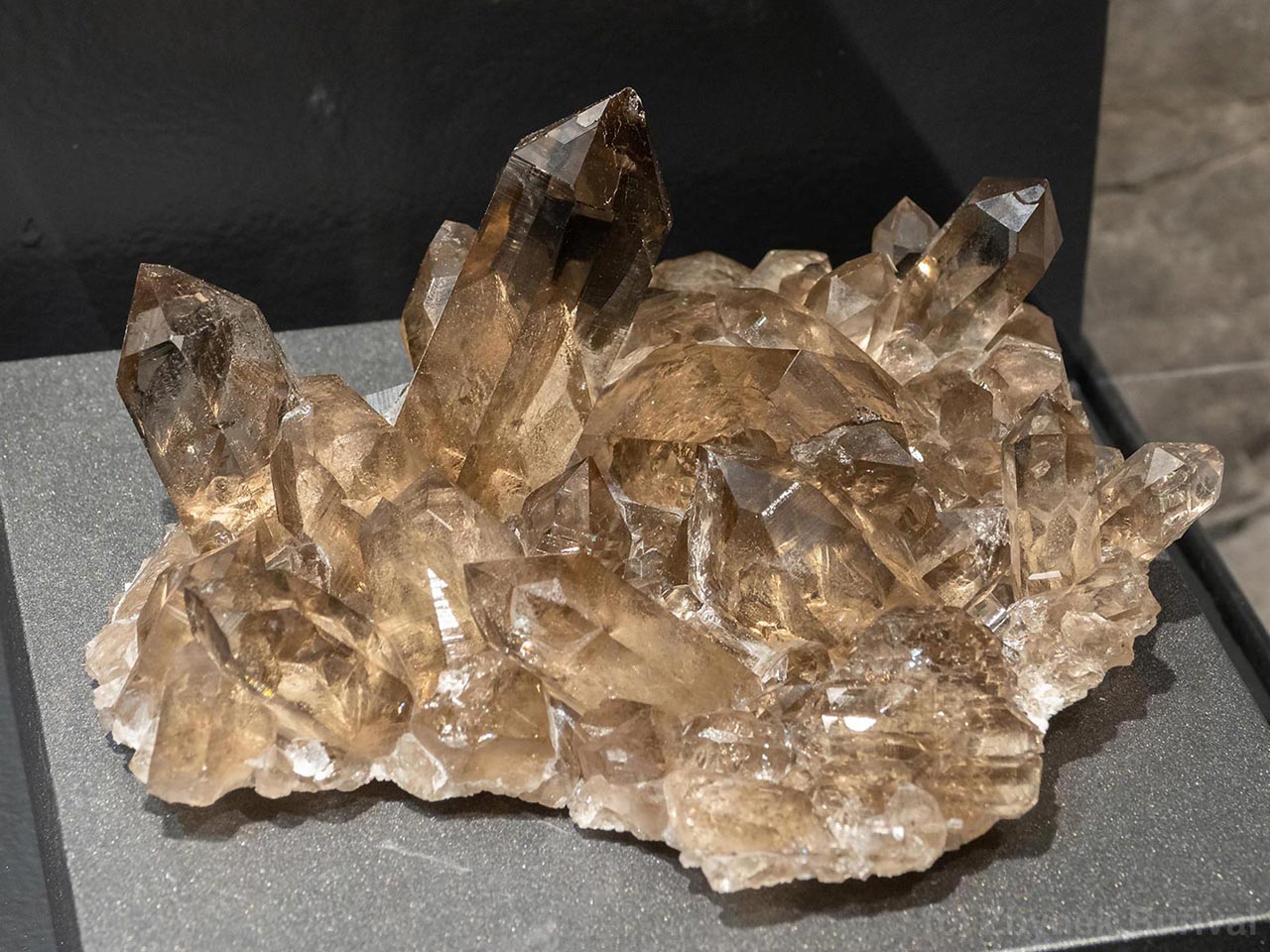

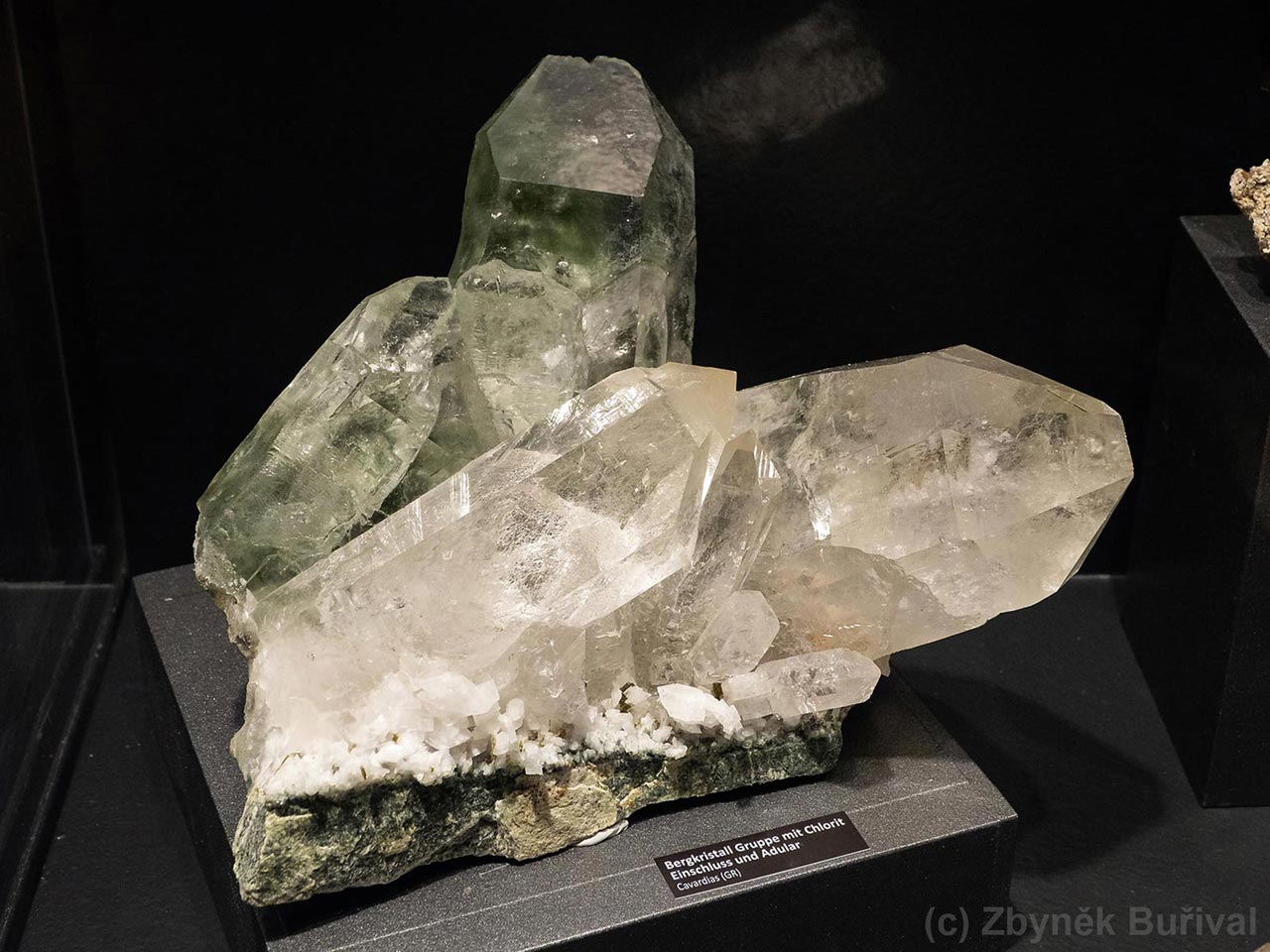
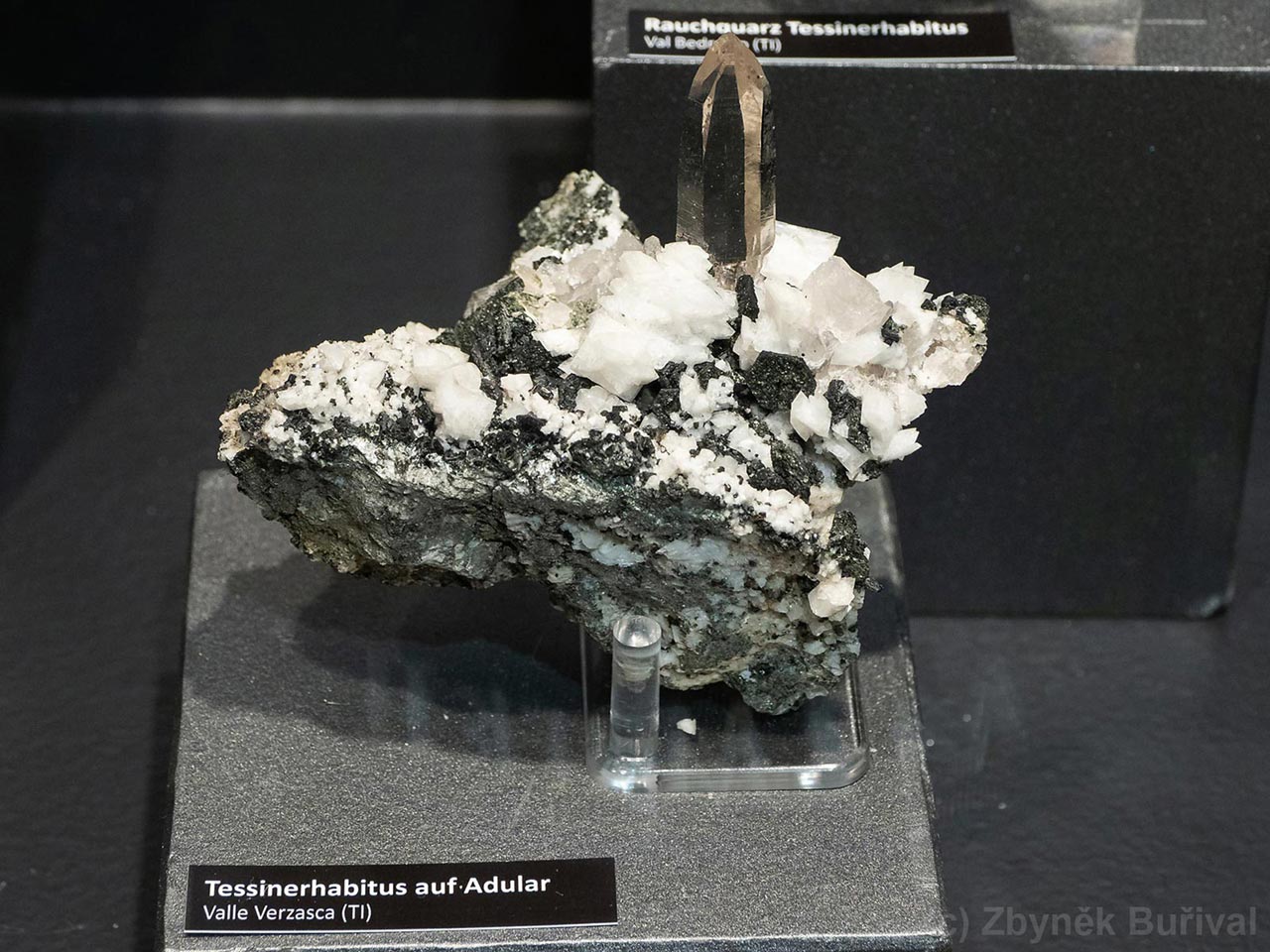
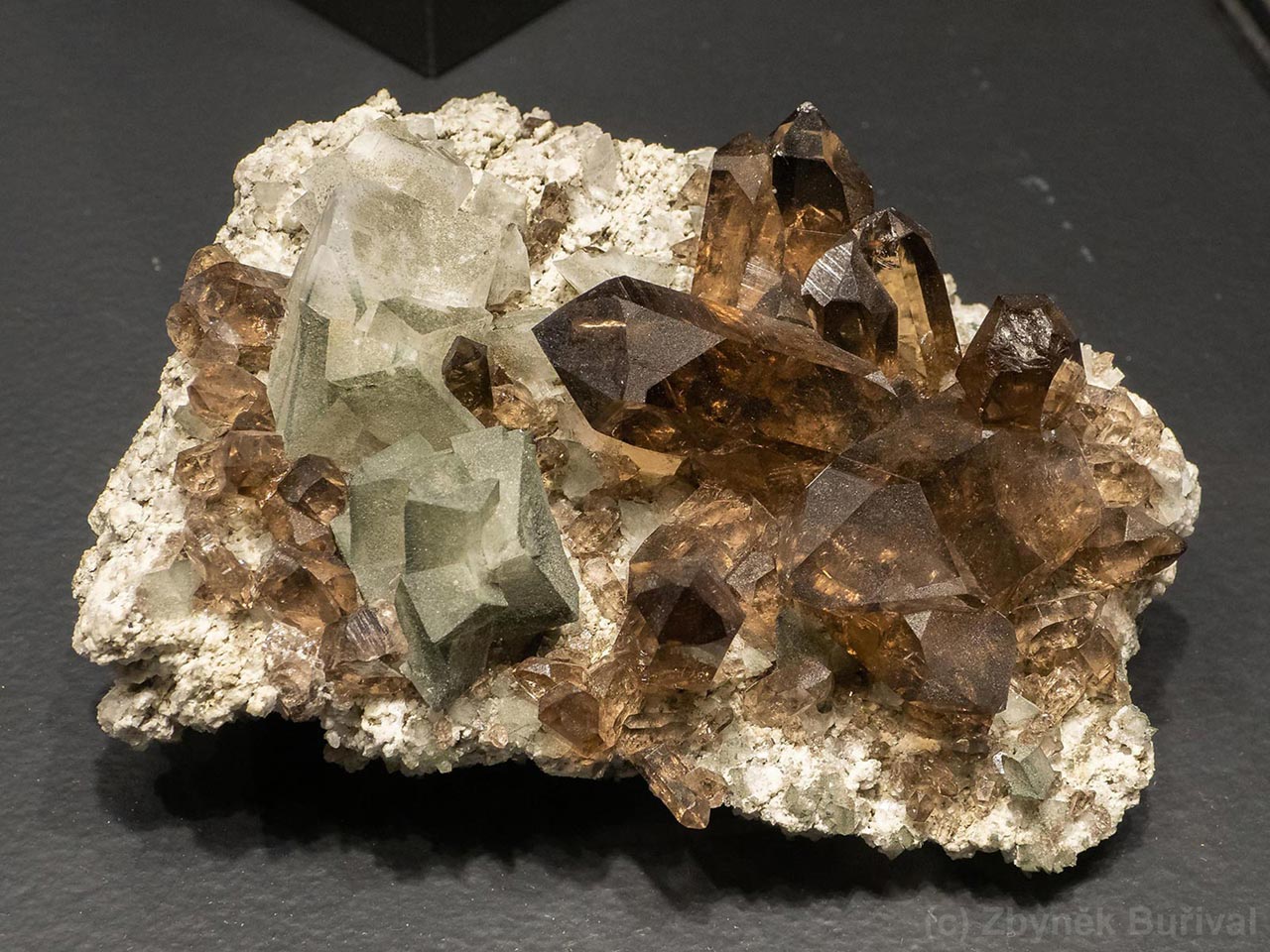
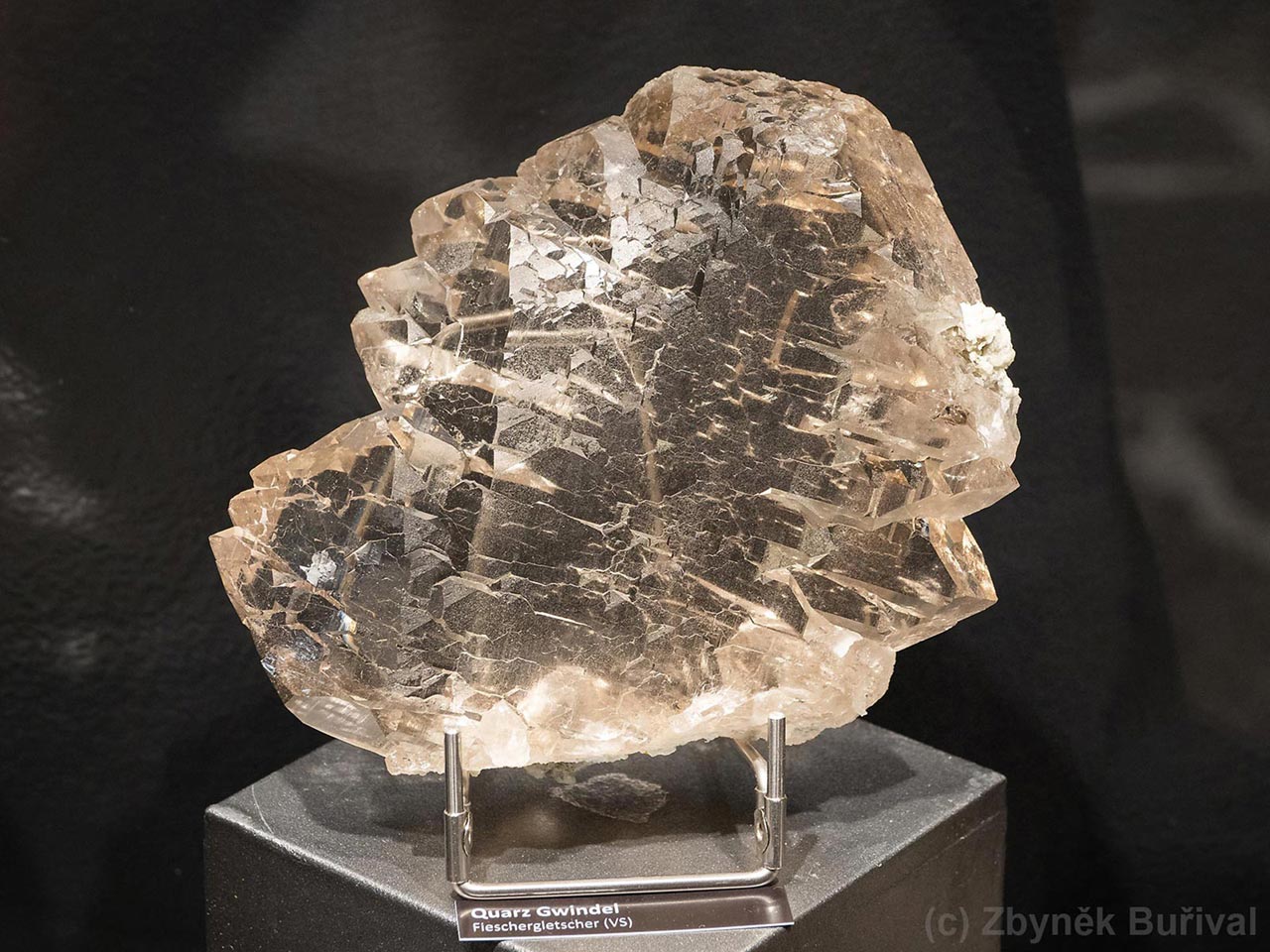
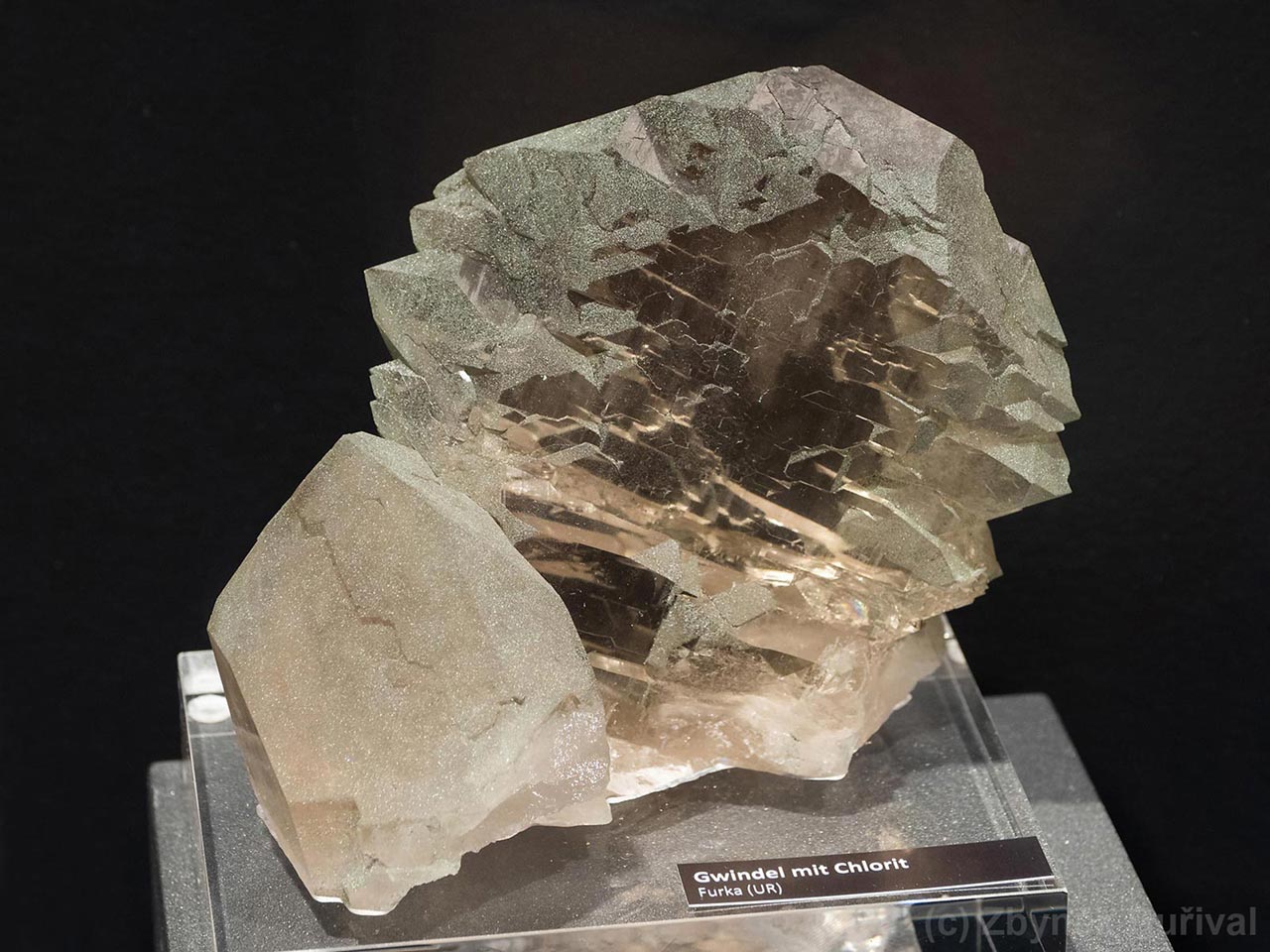
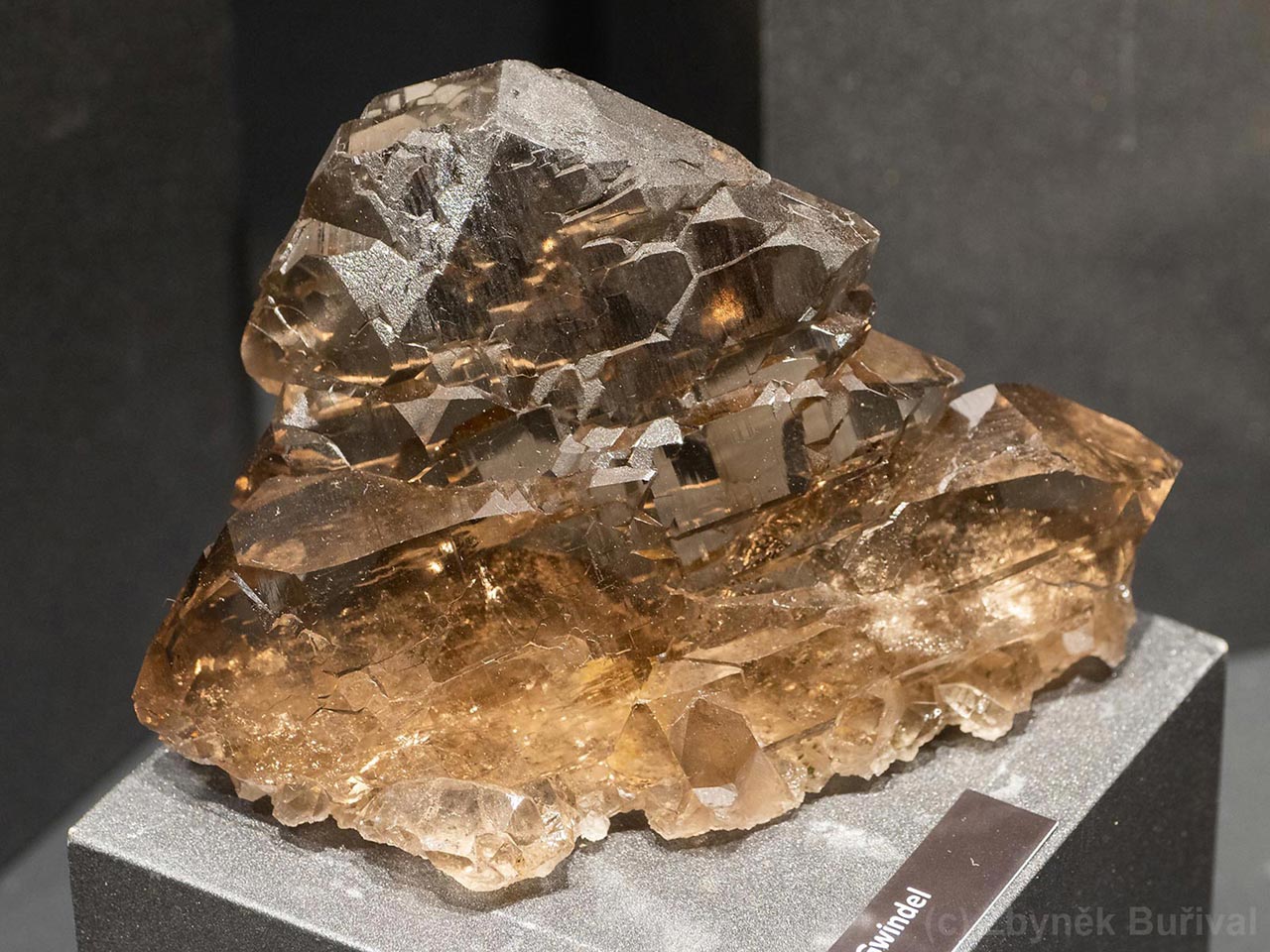

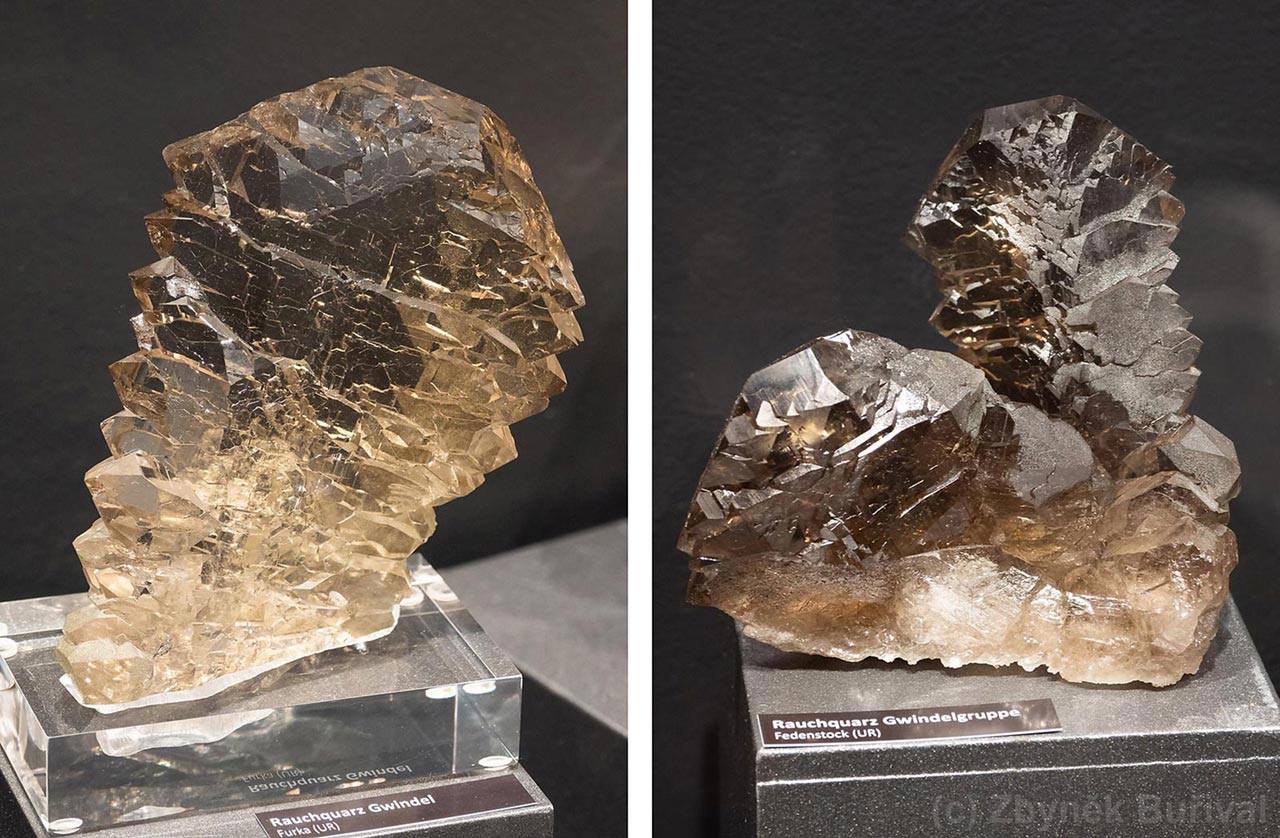
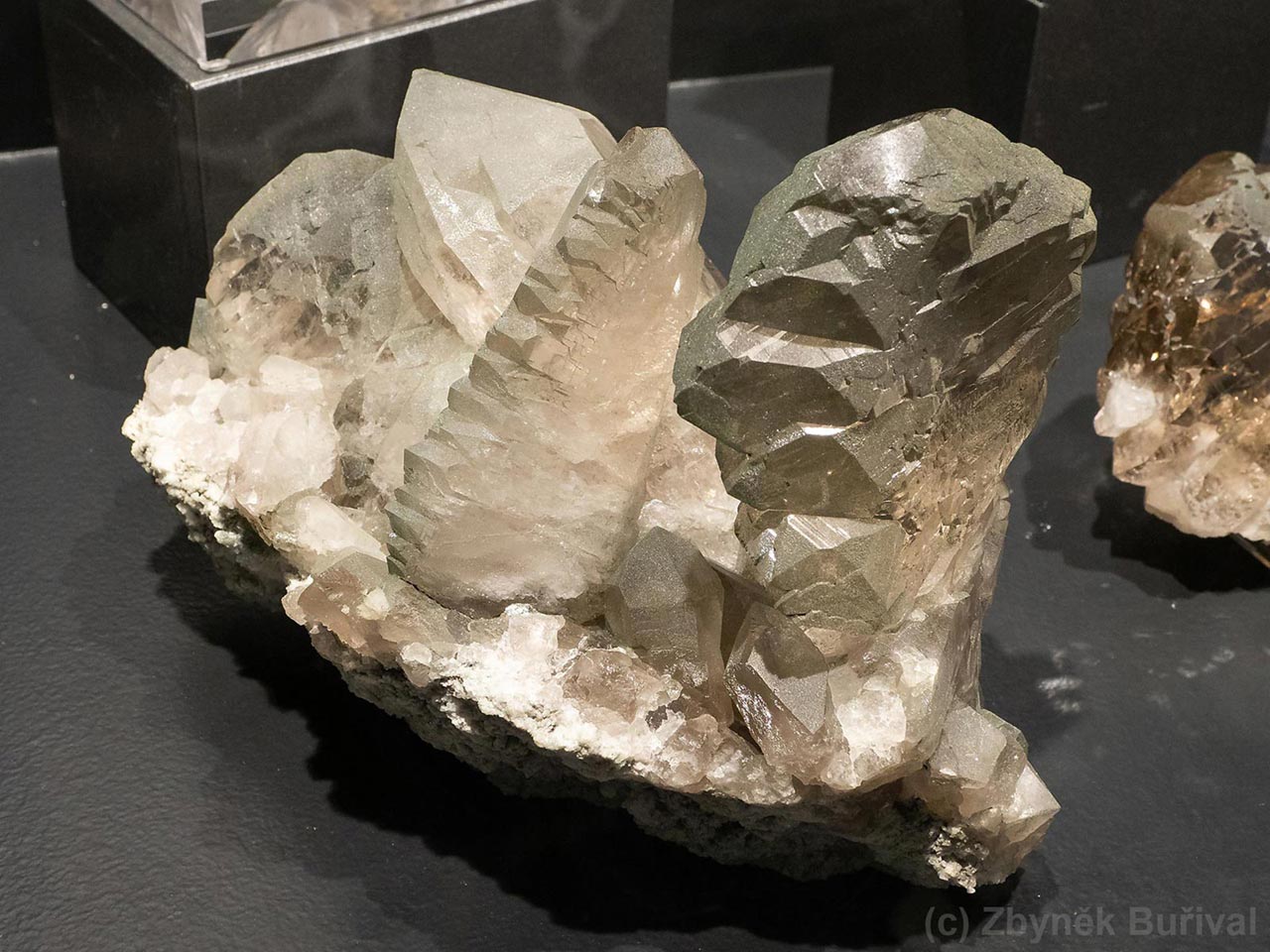
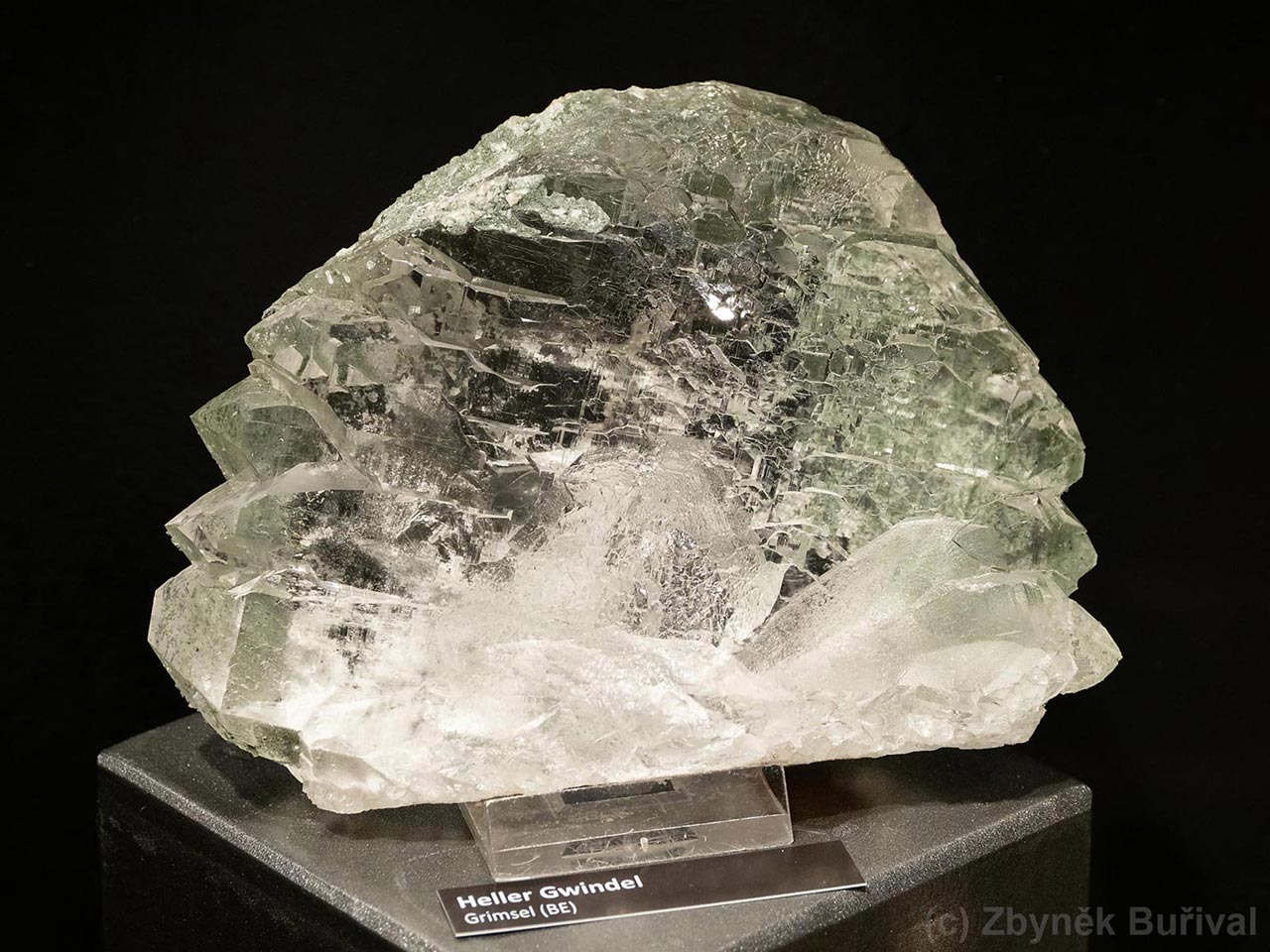
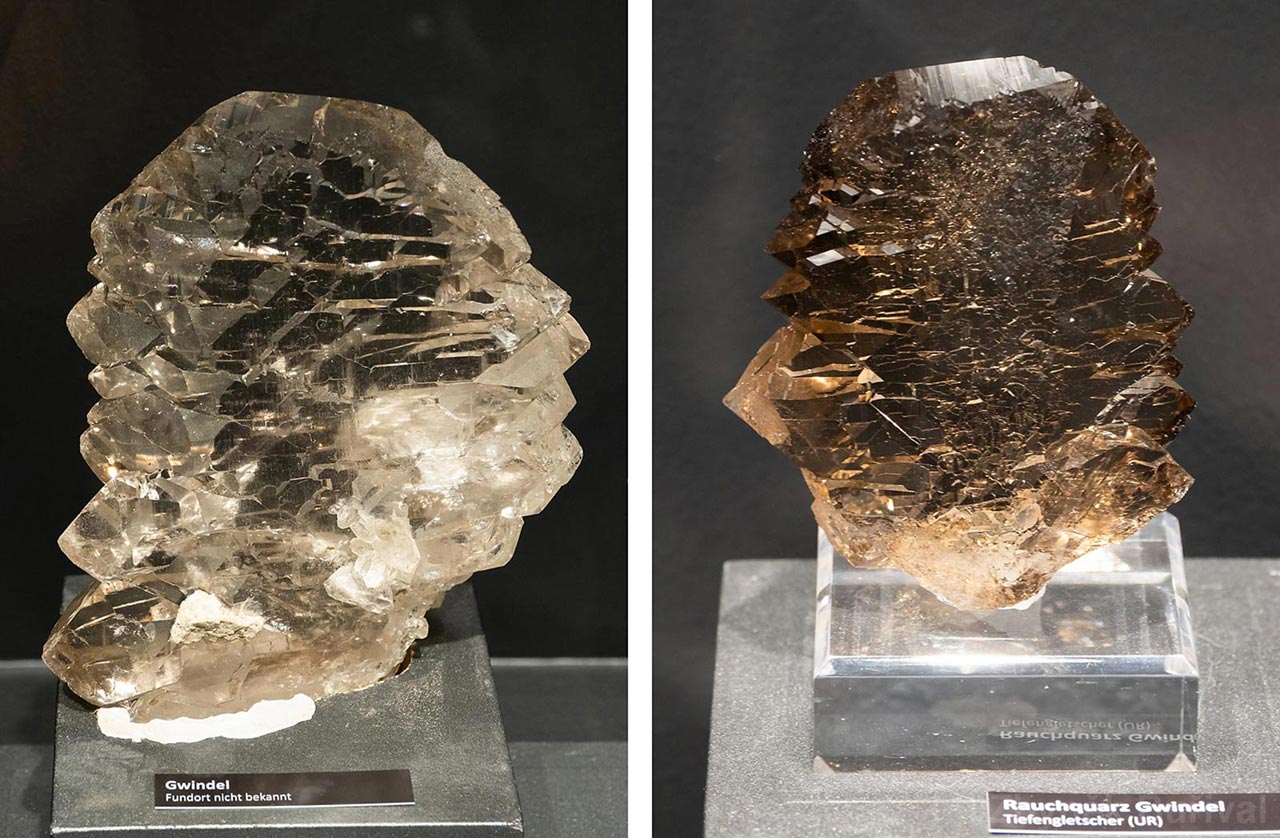
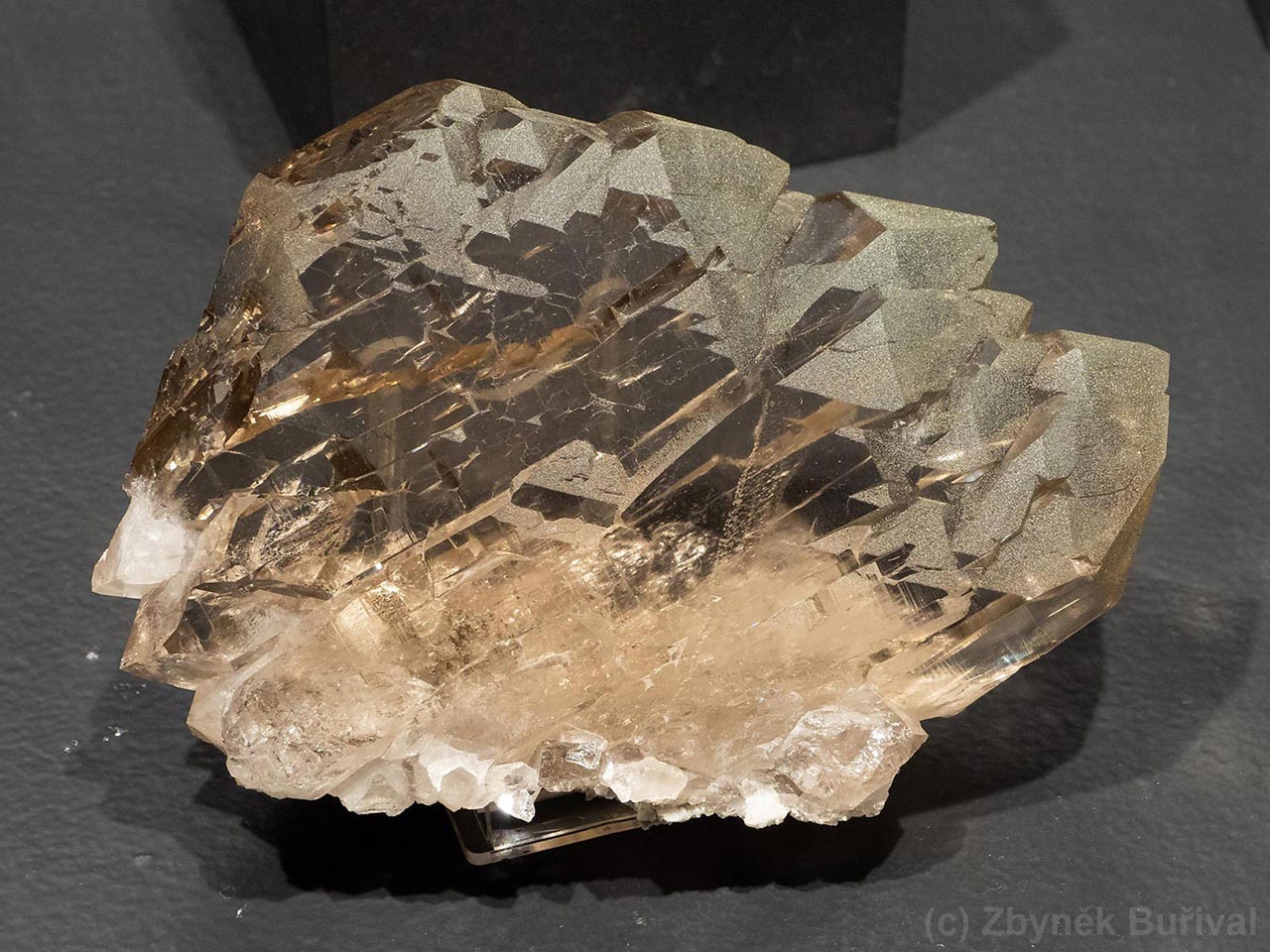
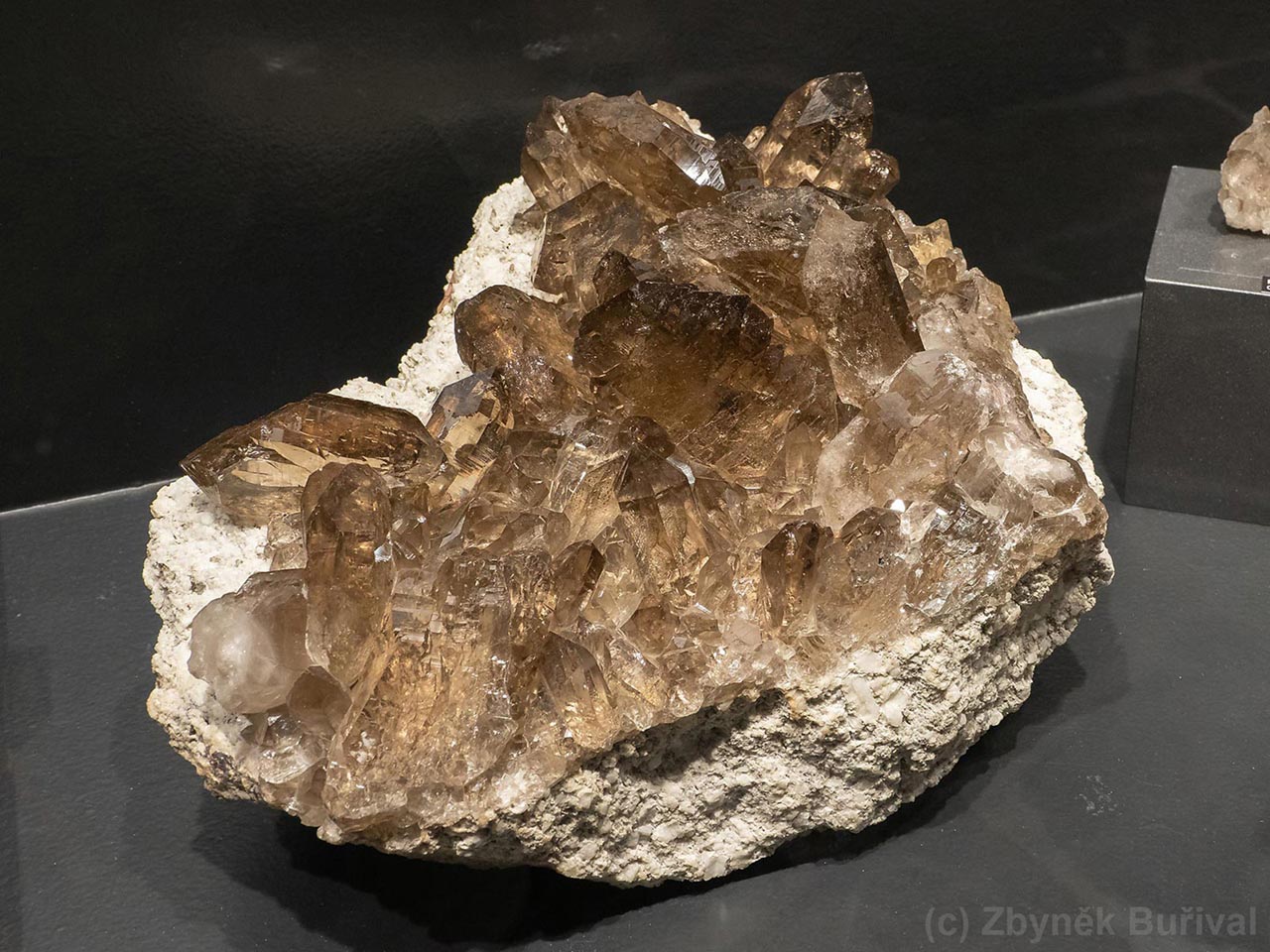
CLOSED GWINDEL
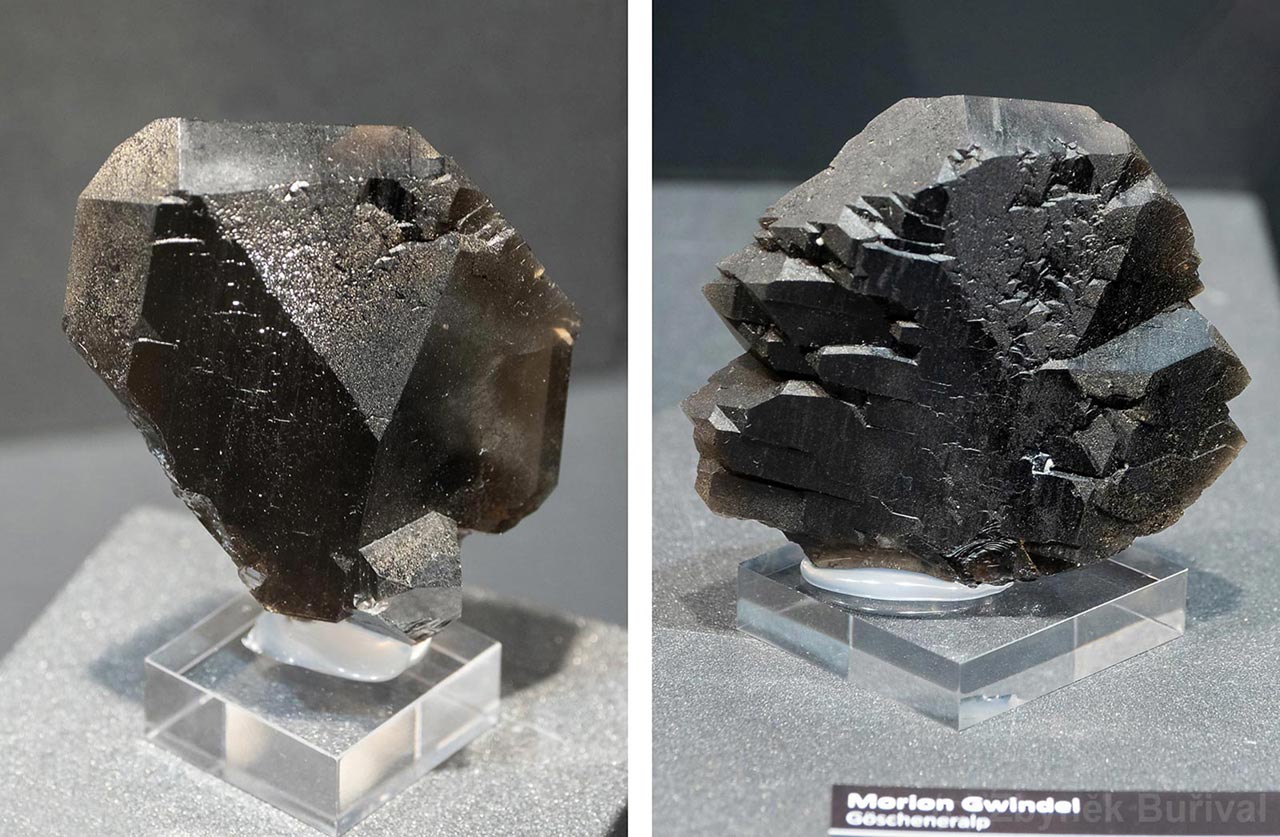
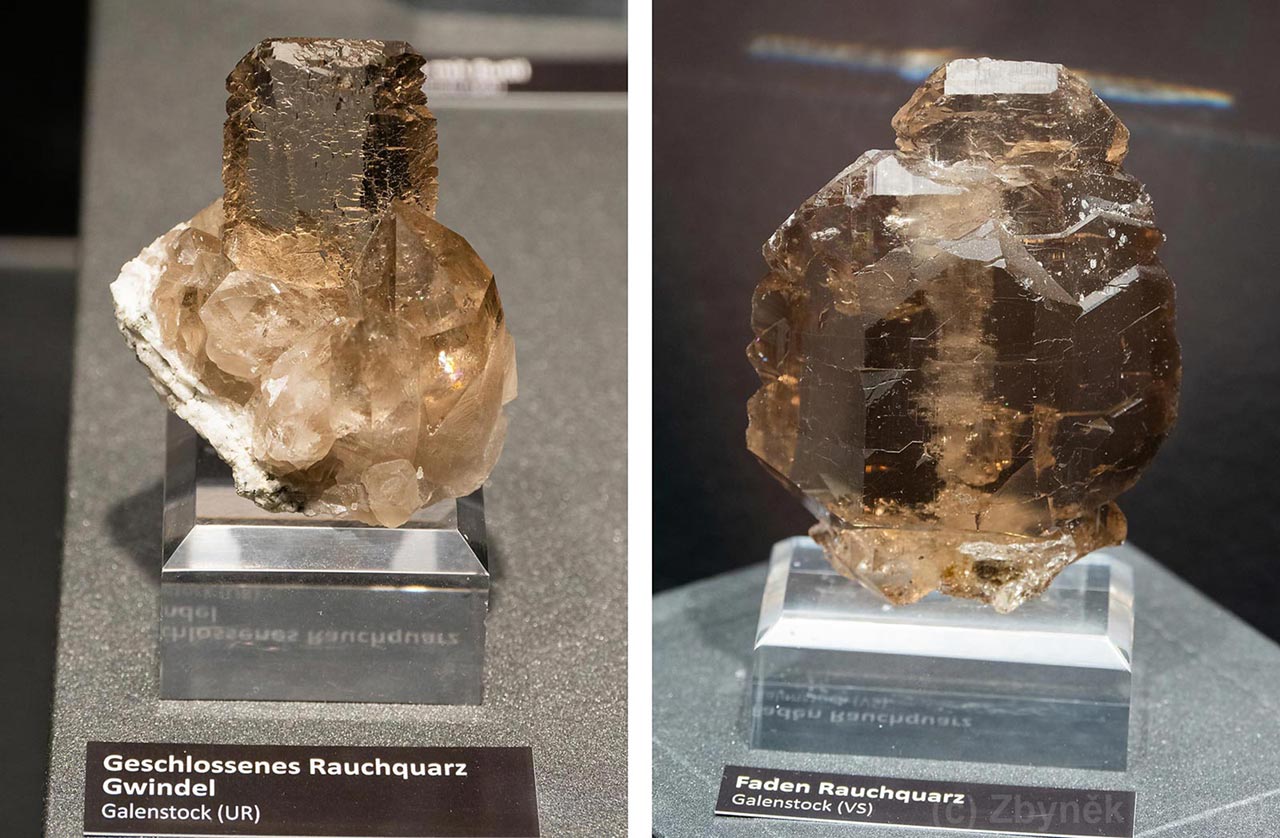
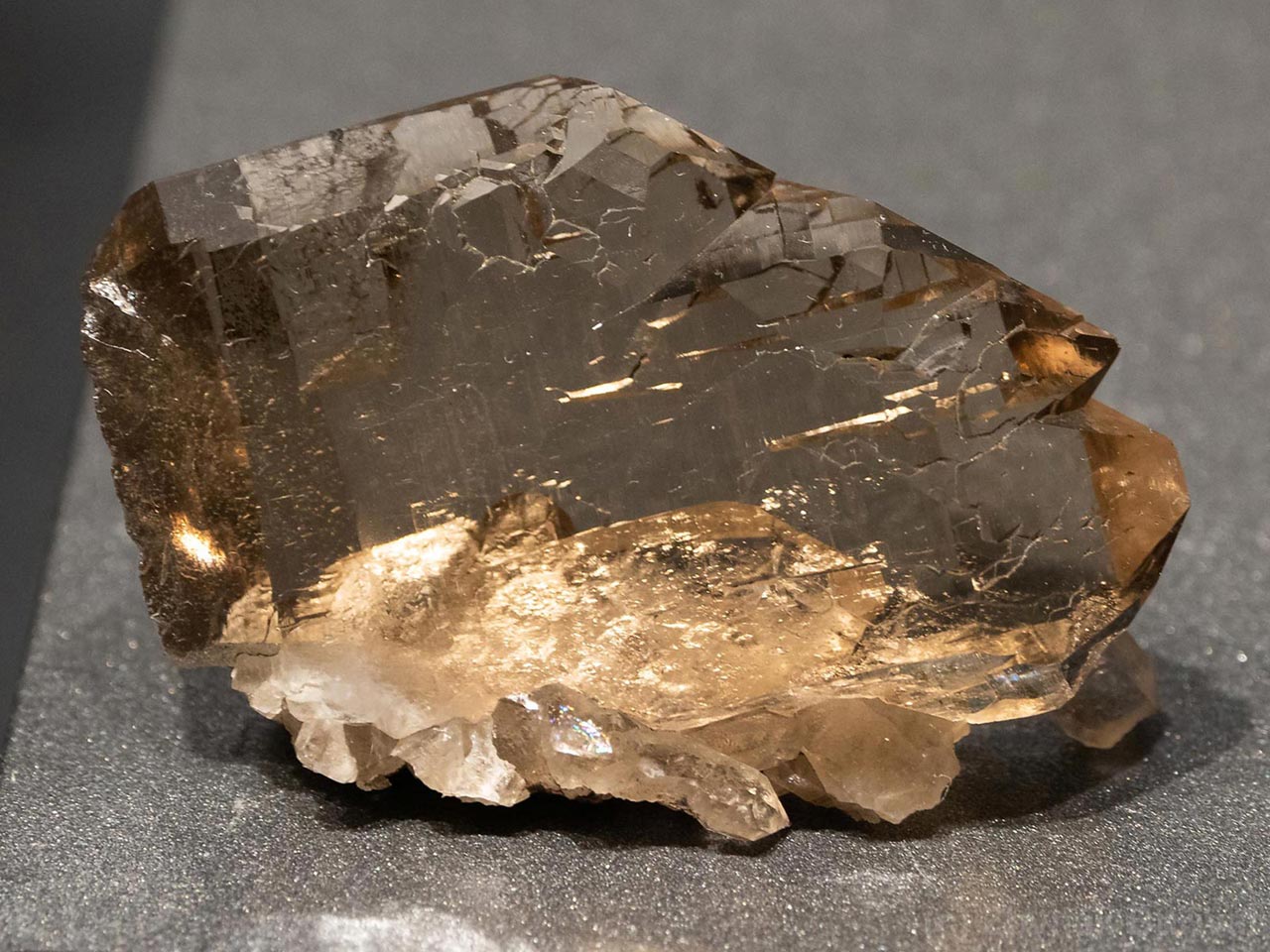
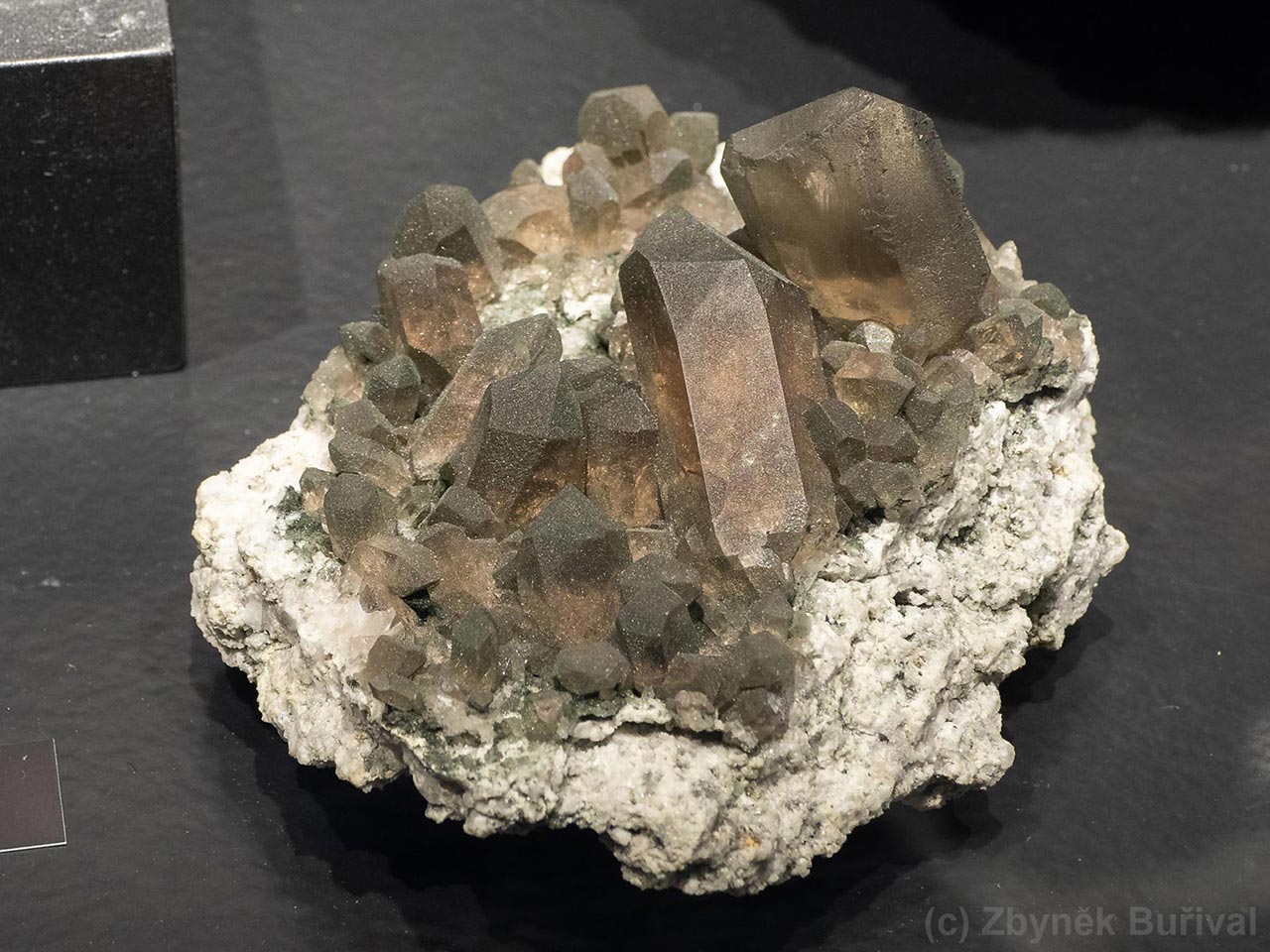
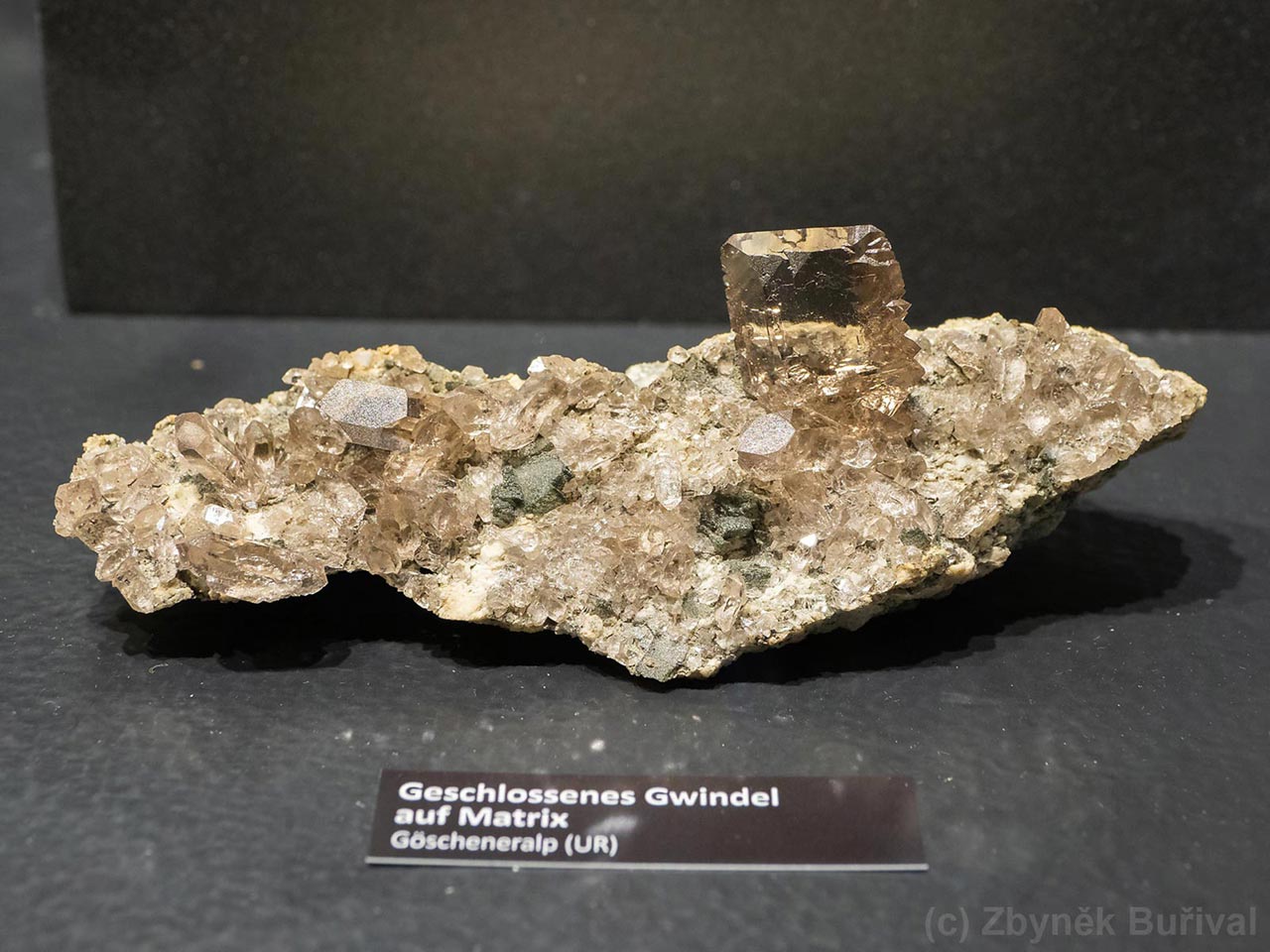
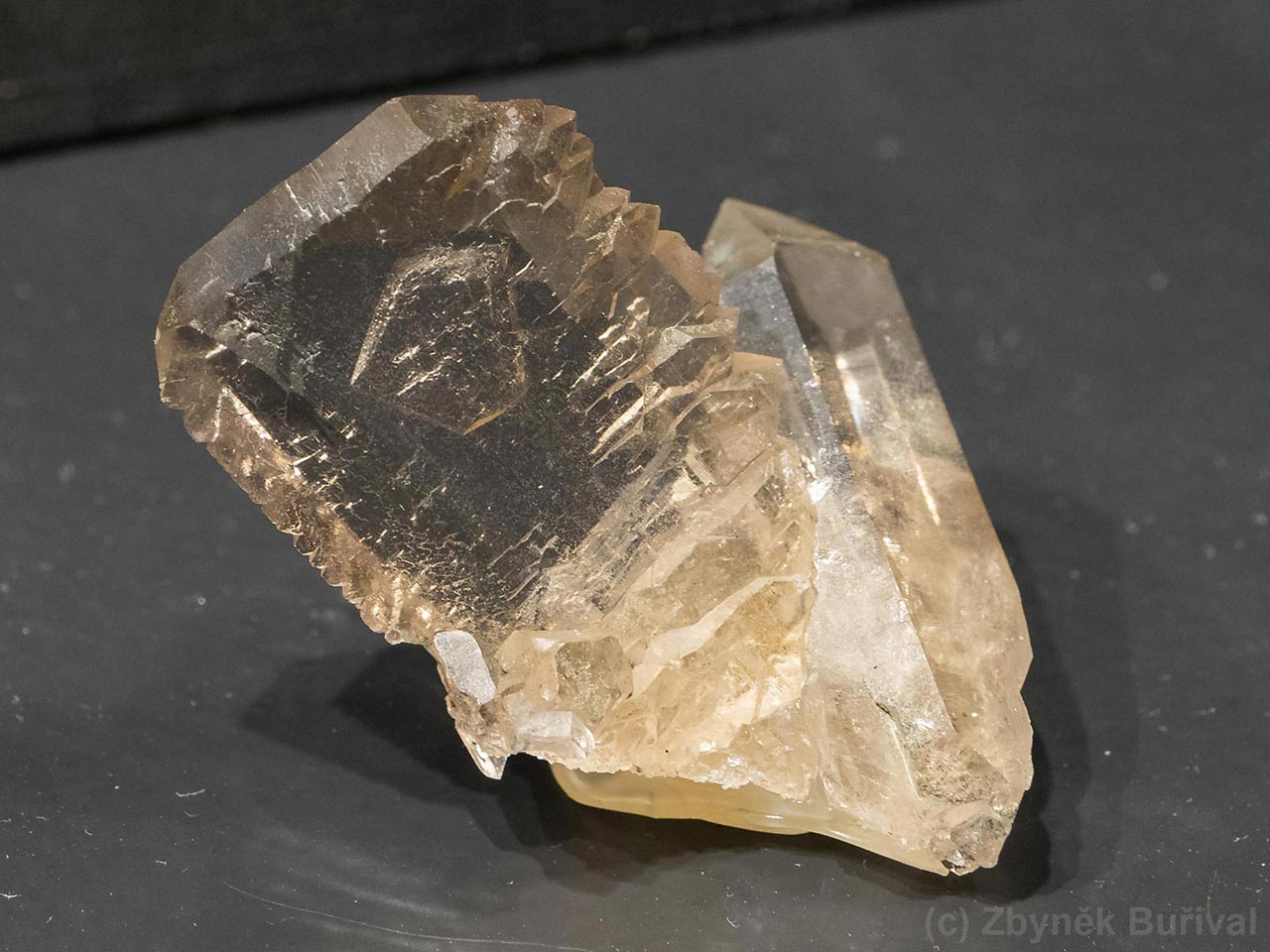





Comments